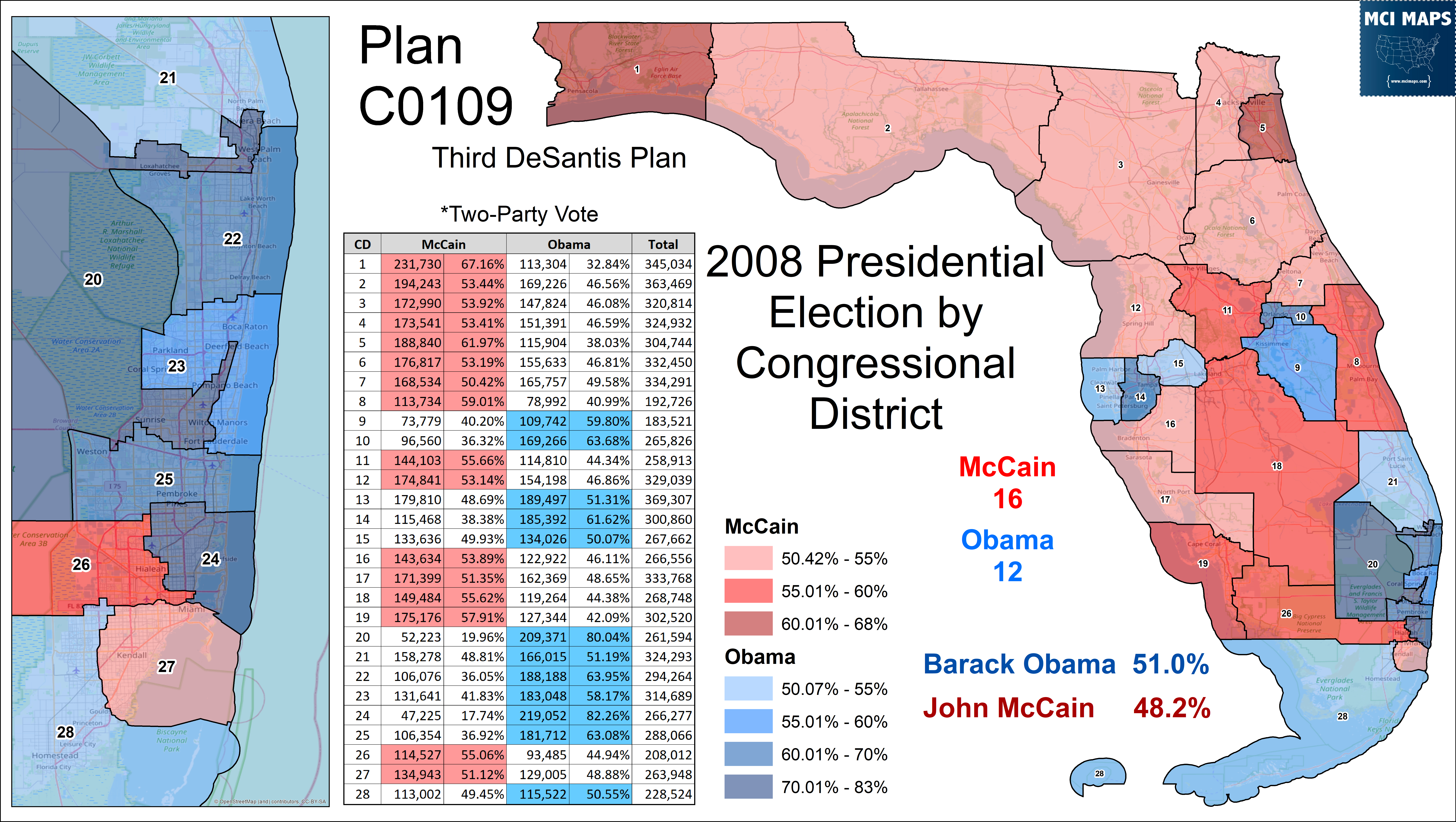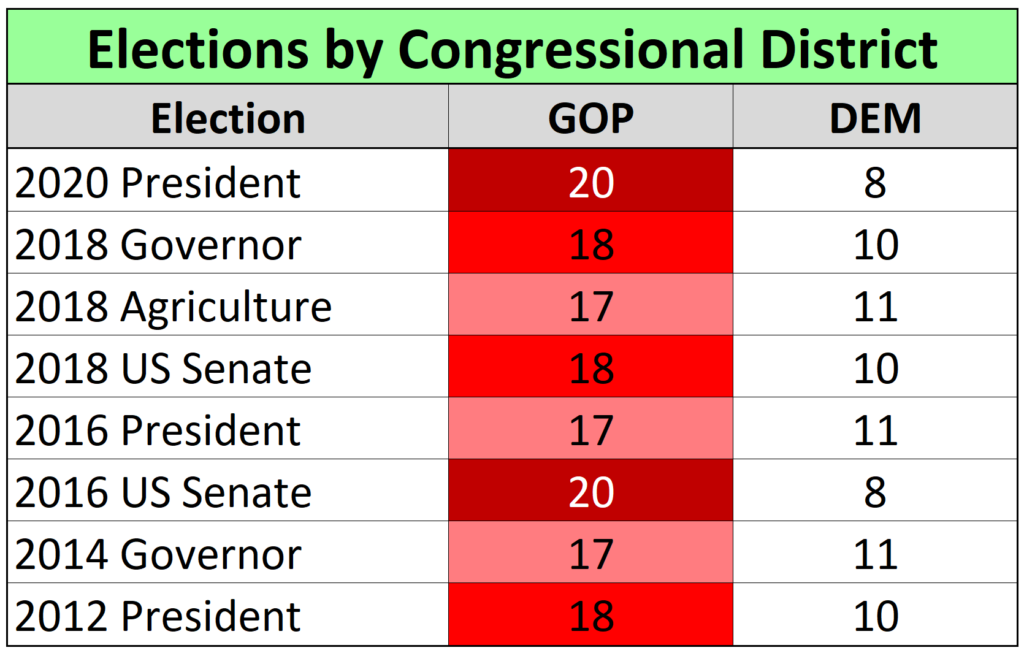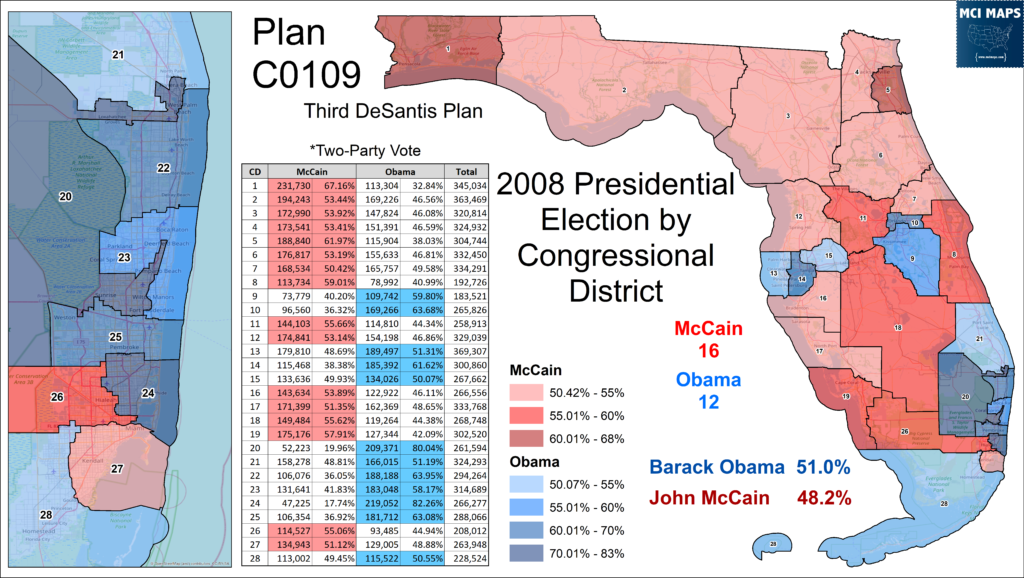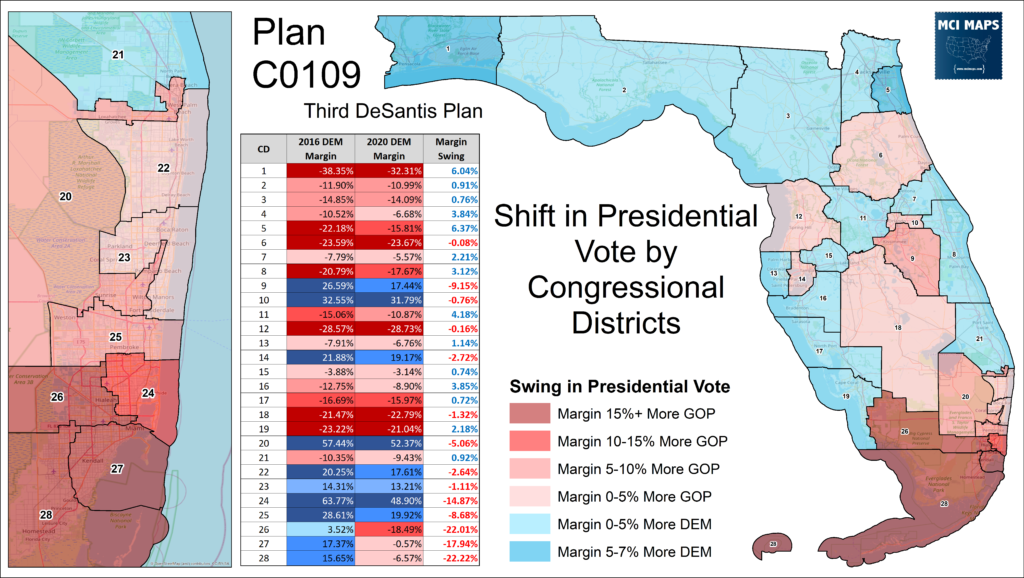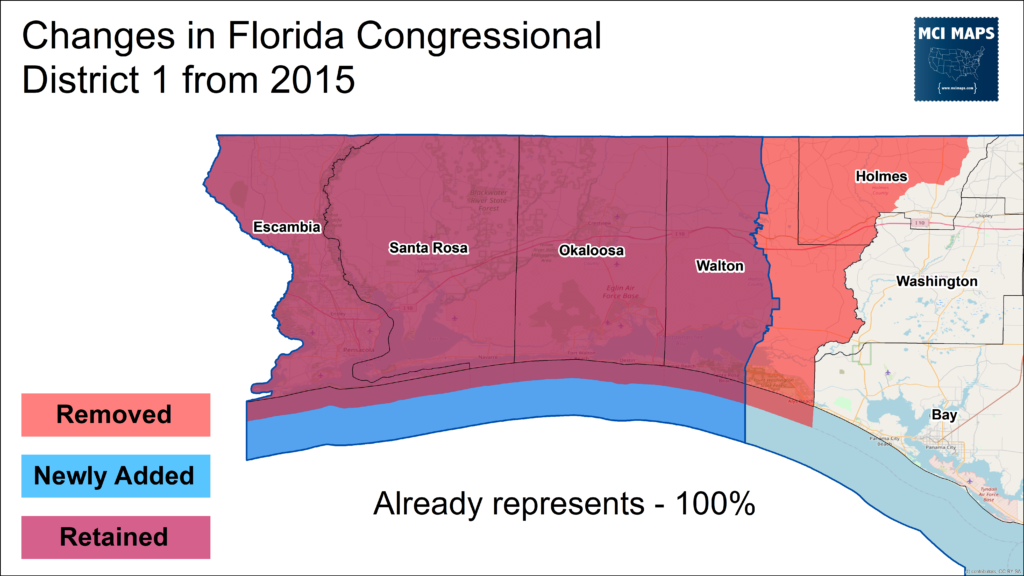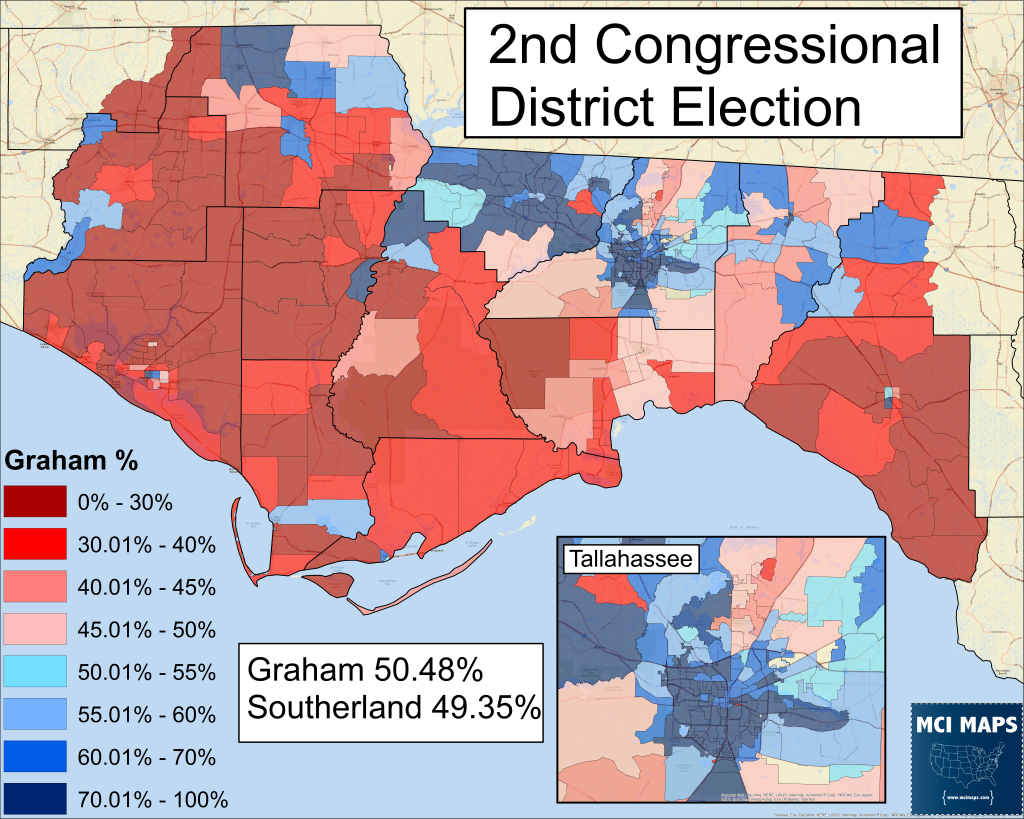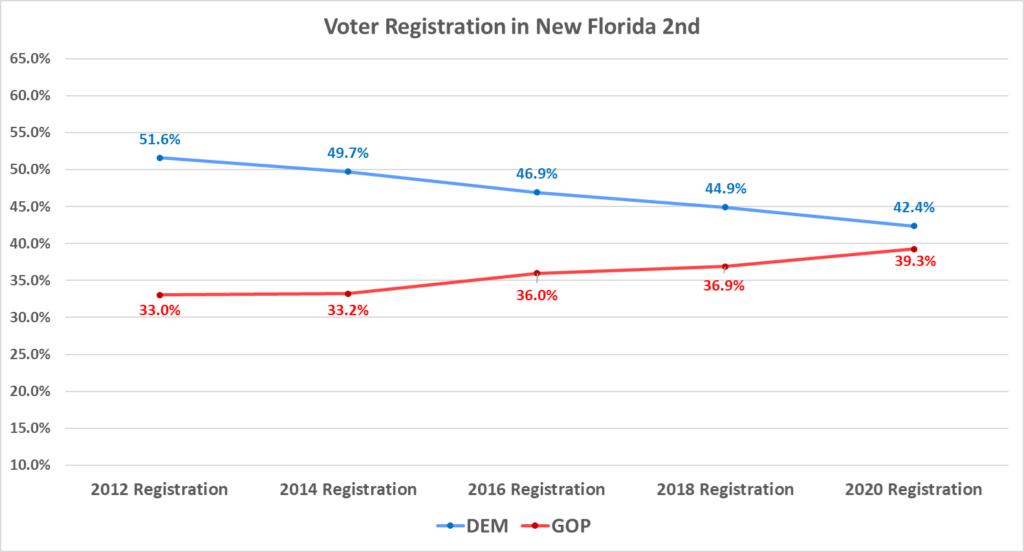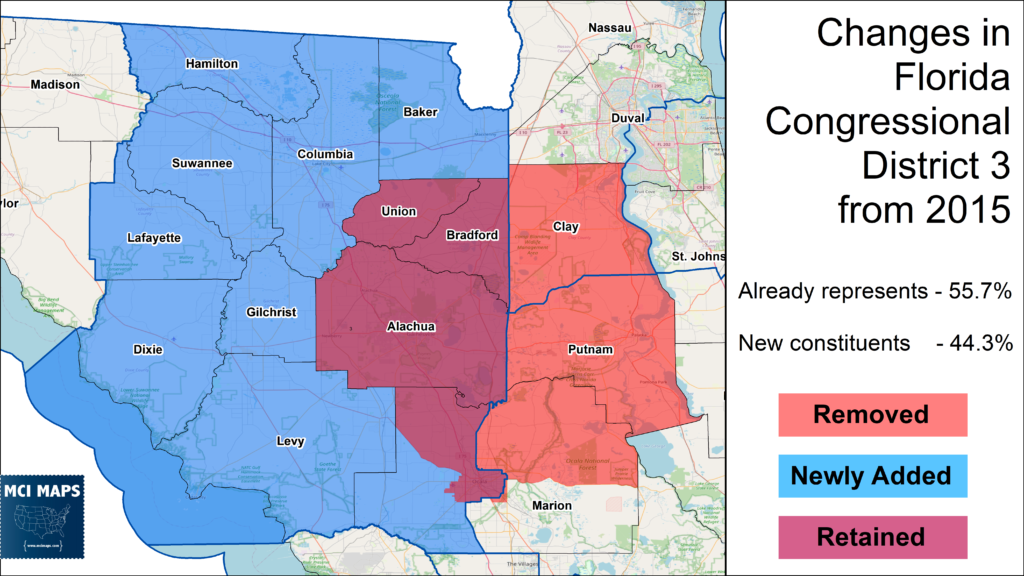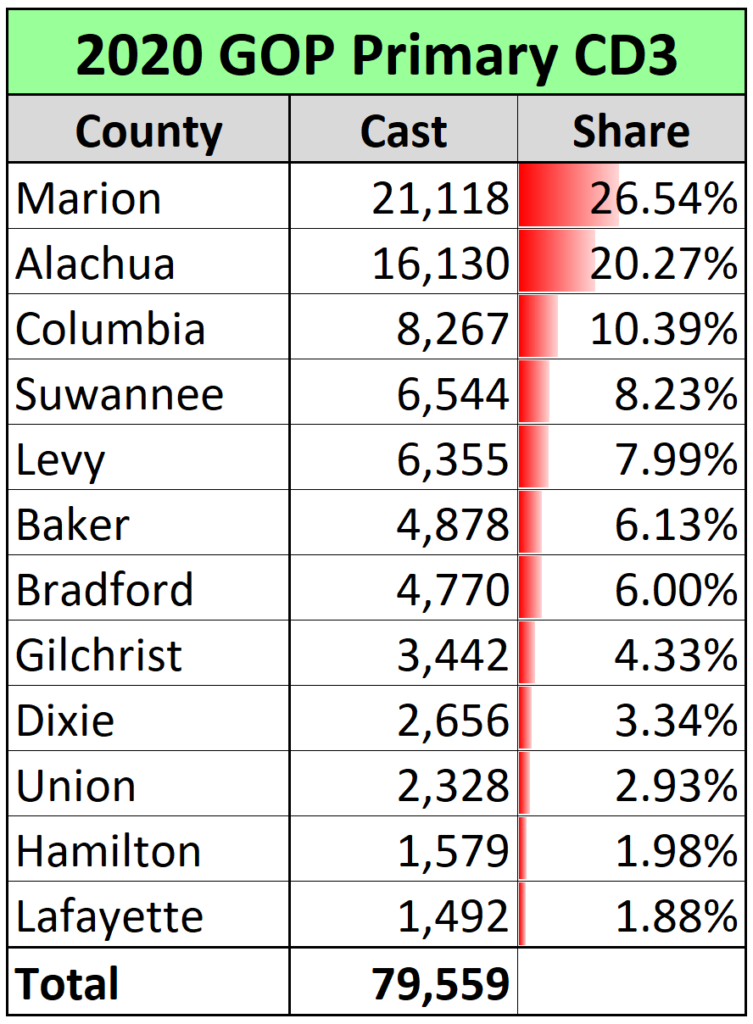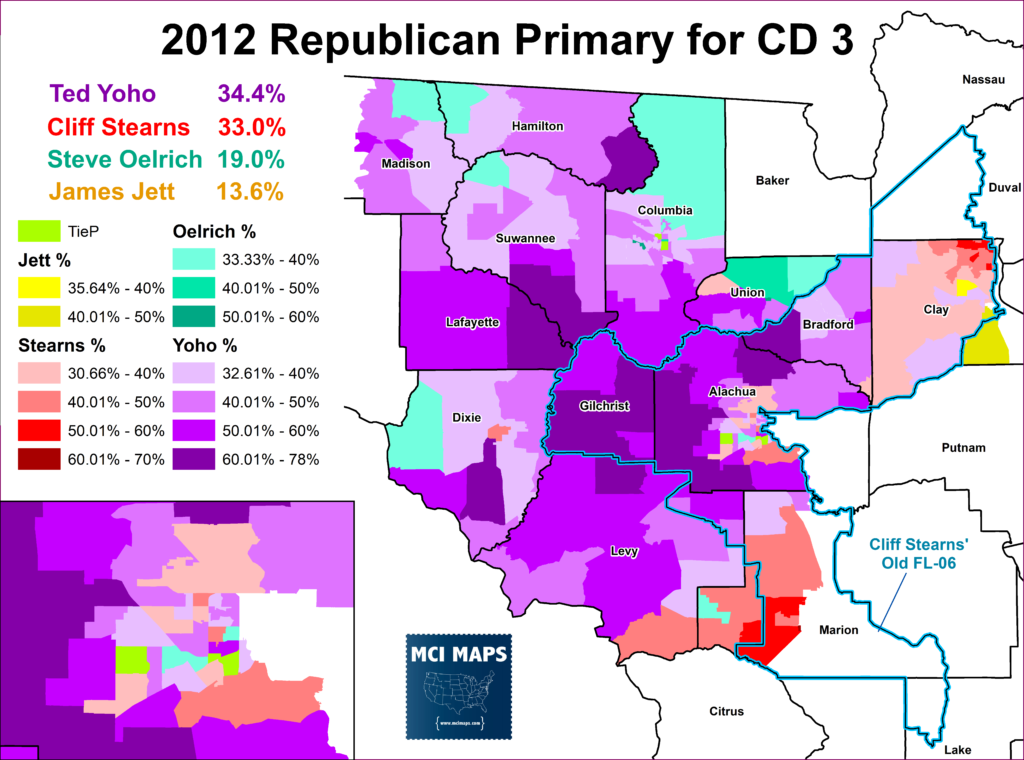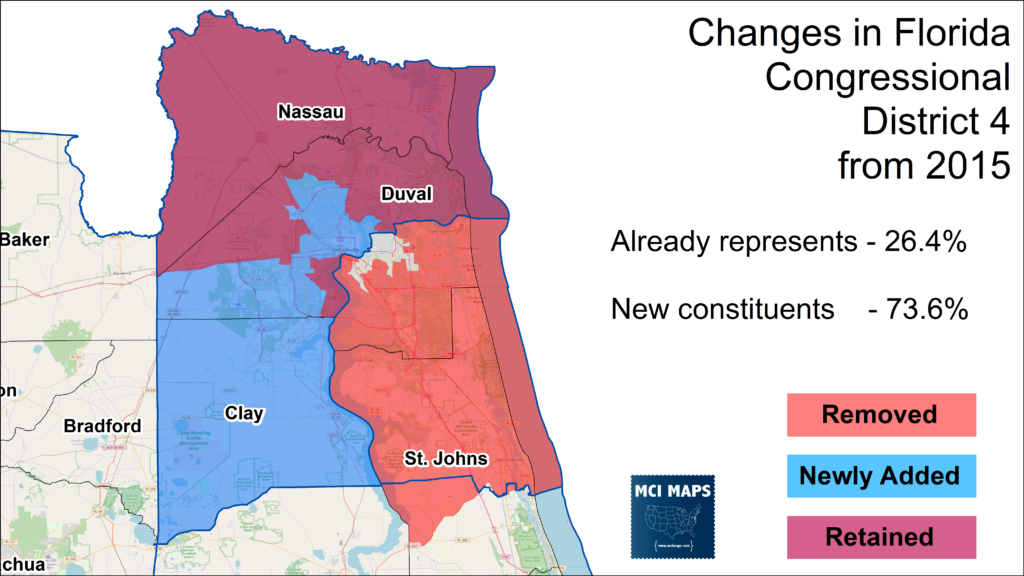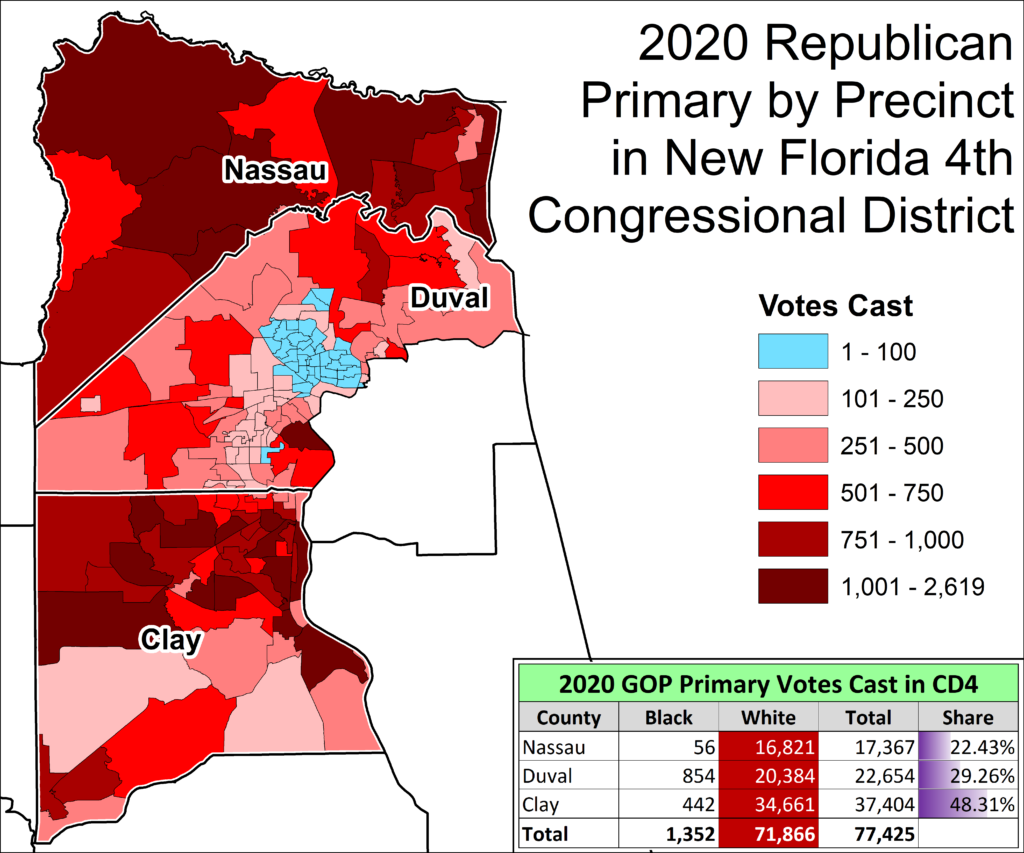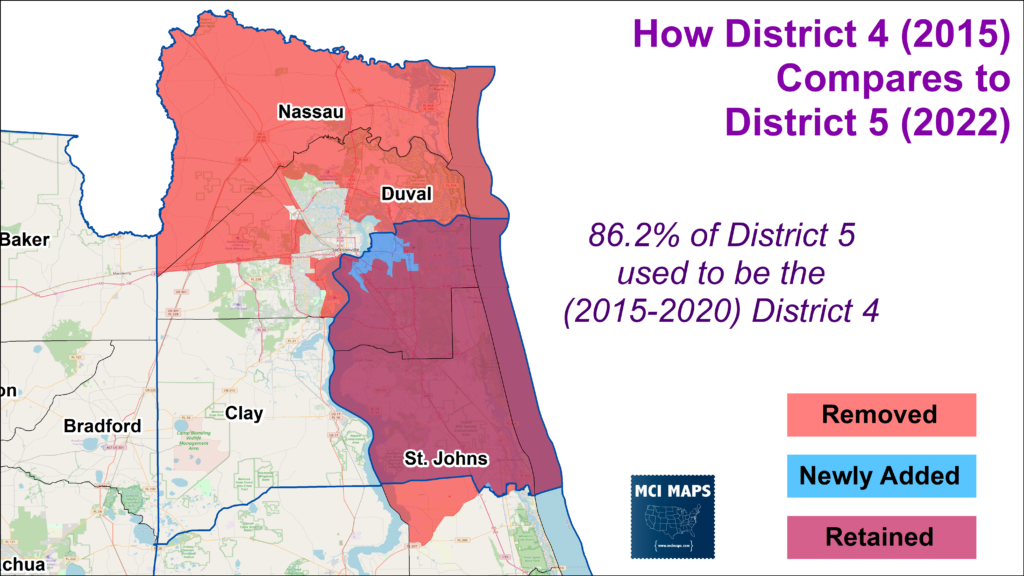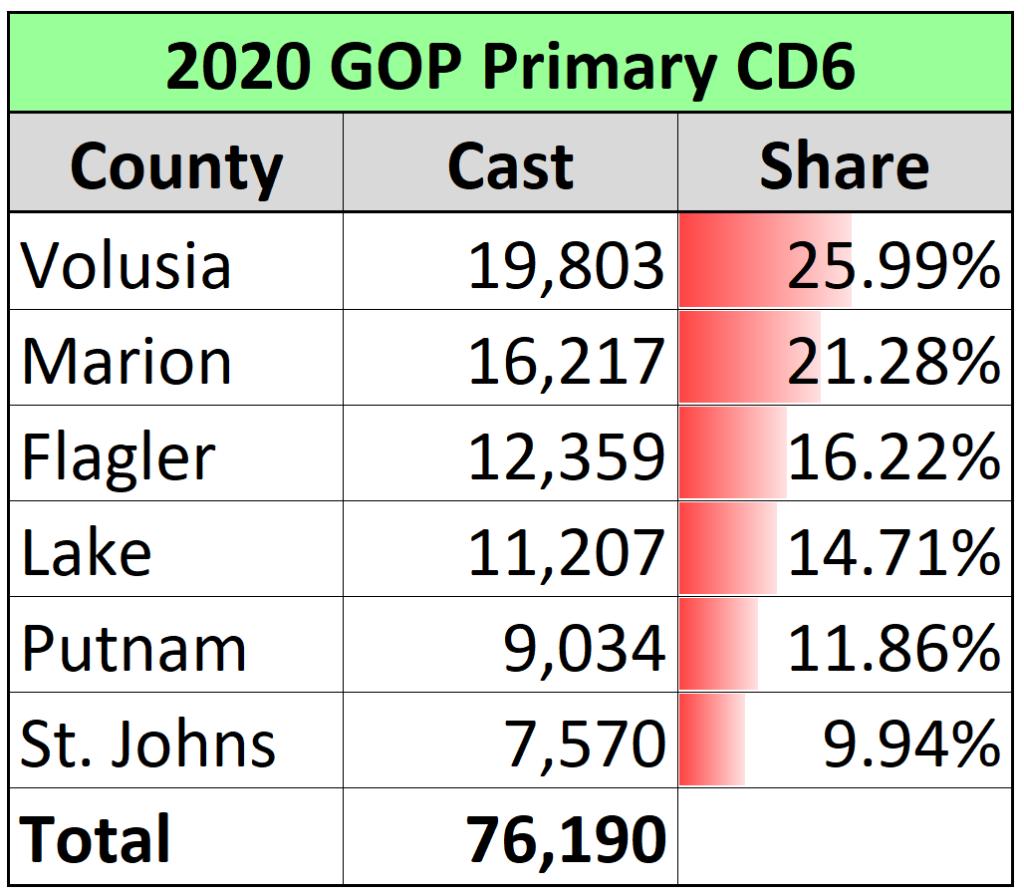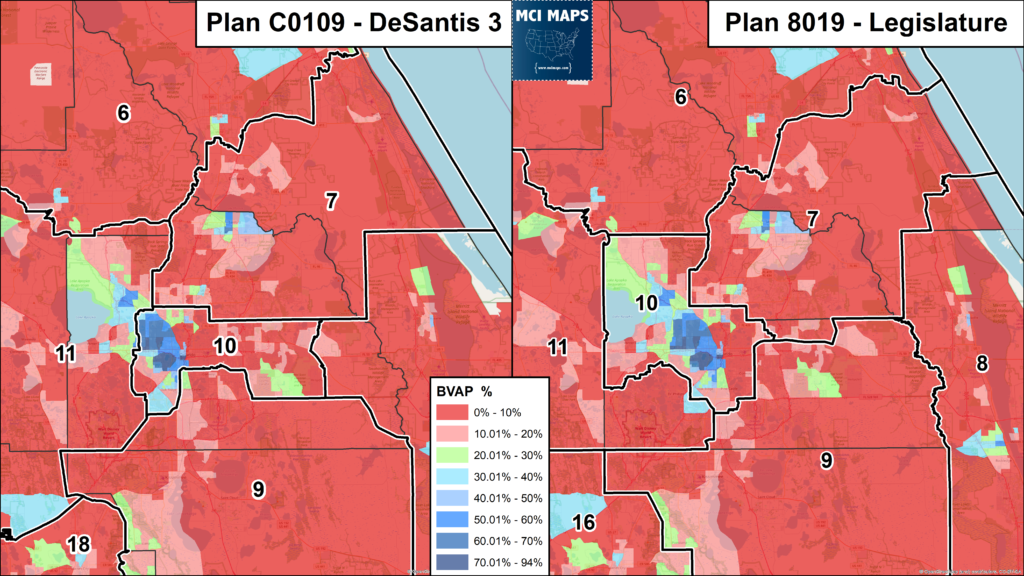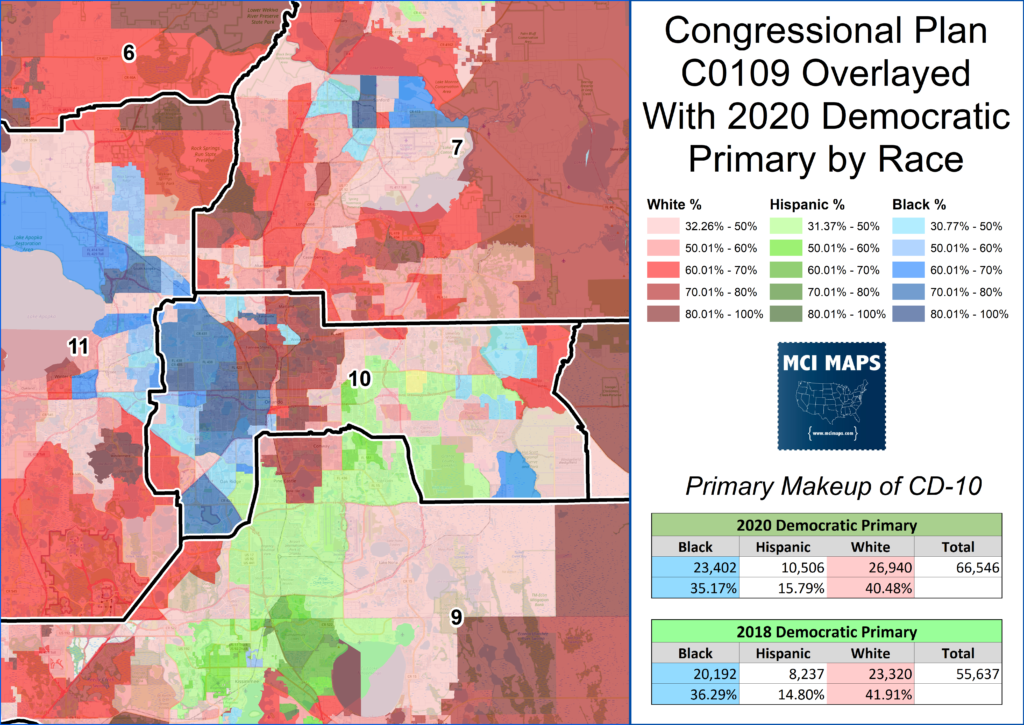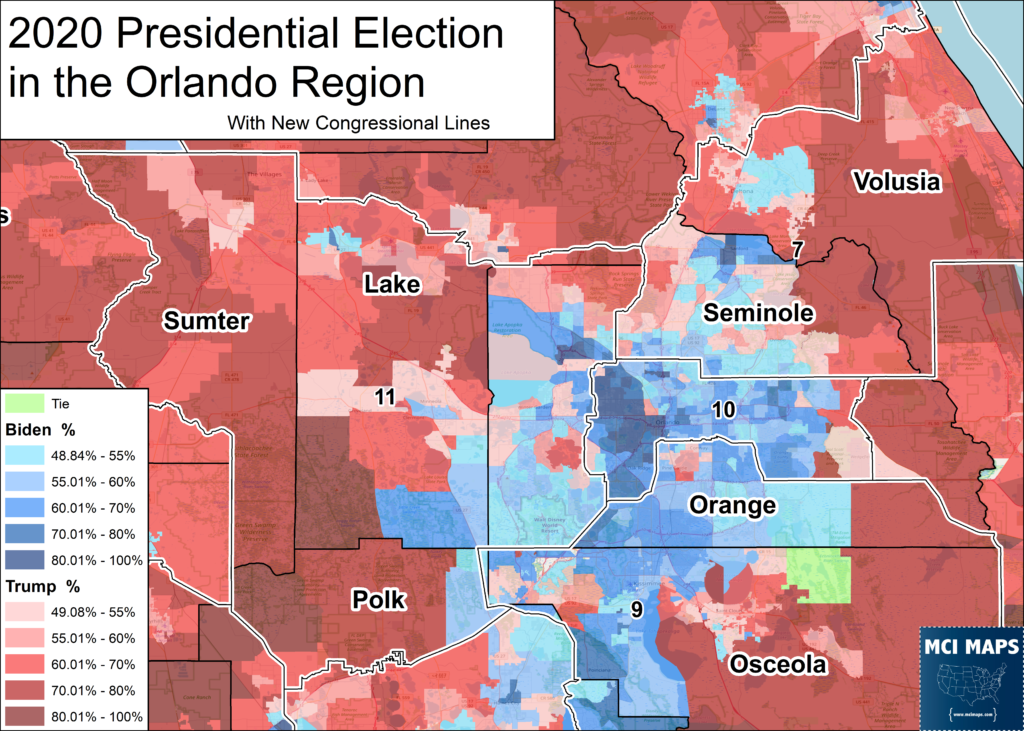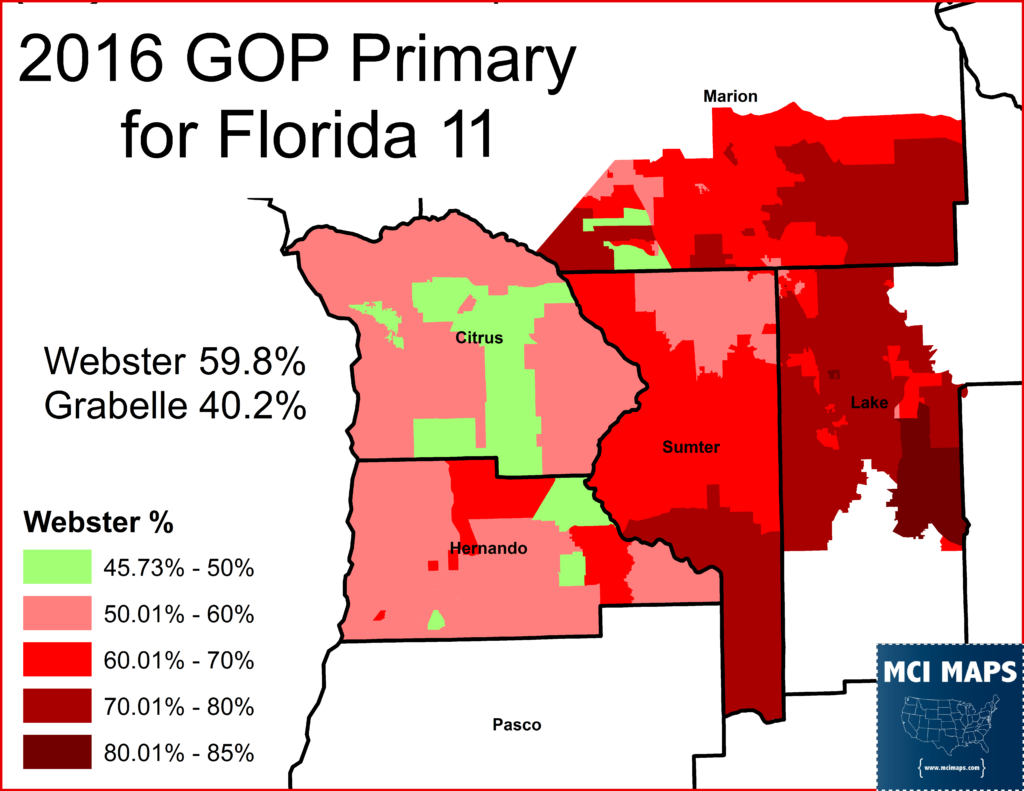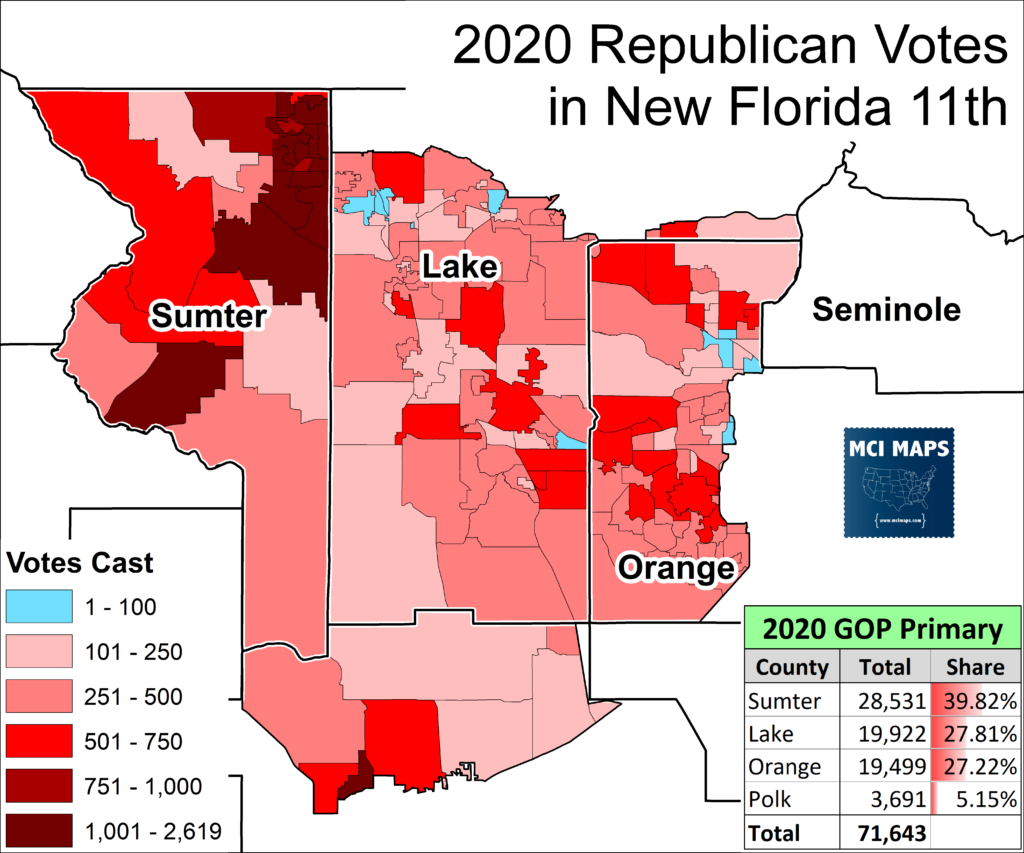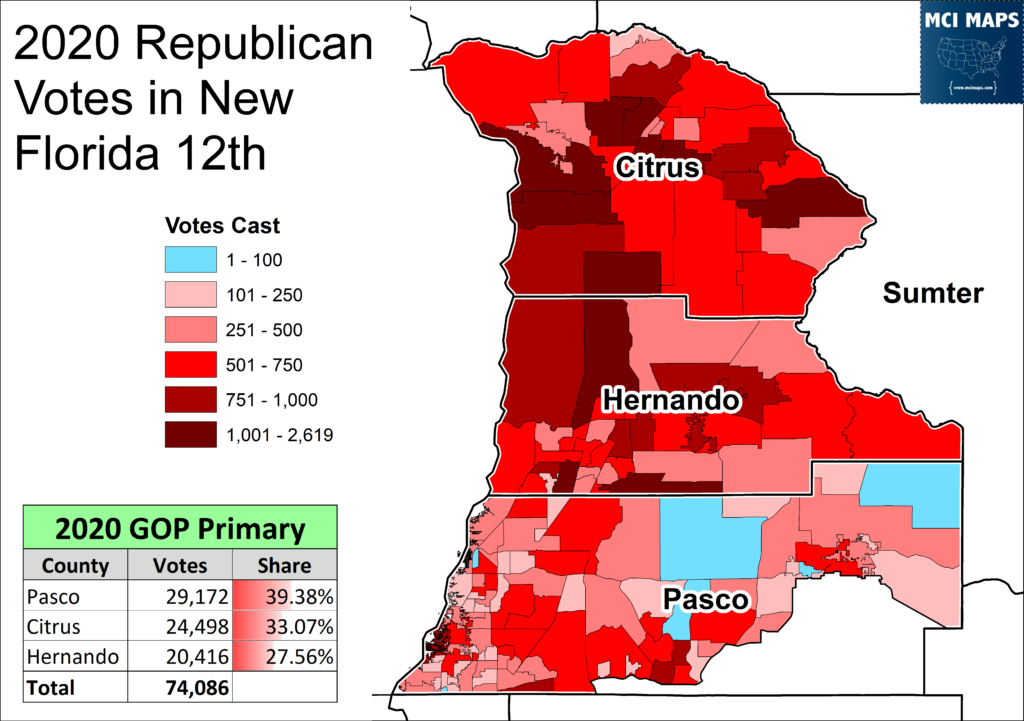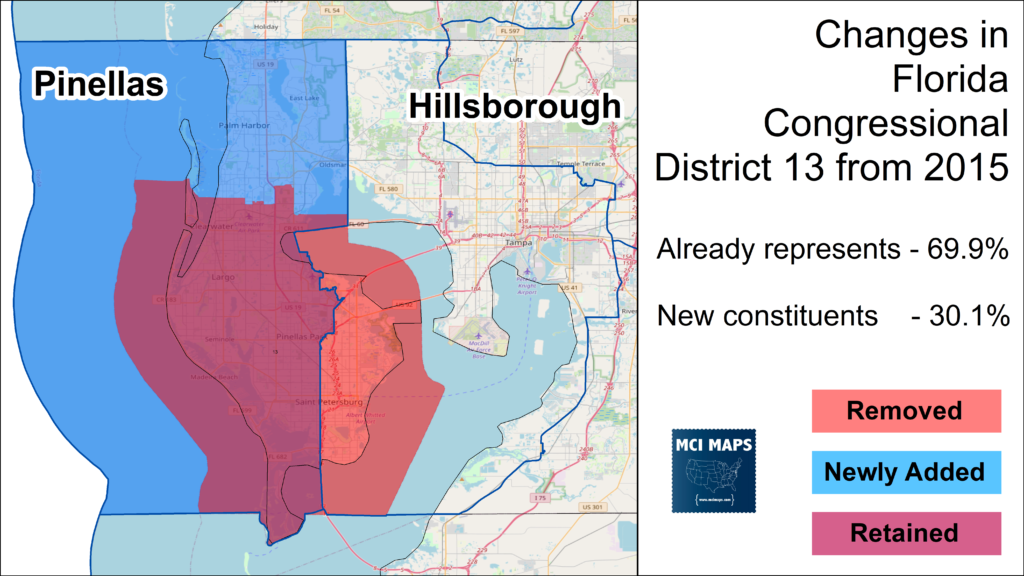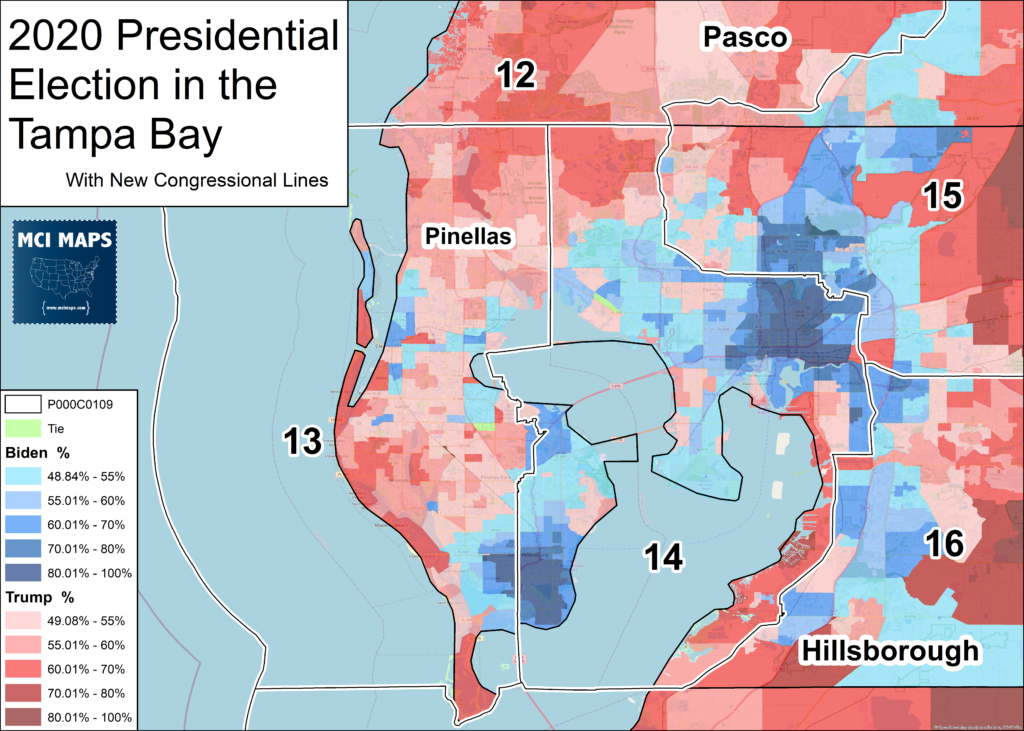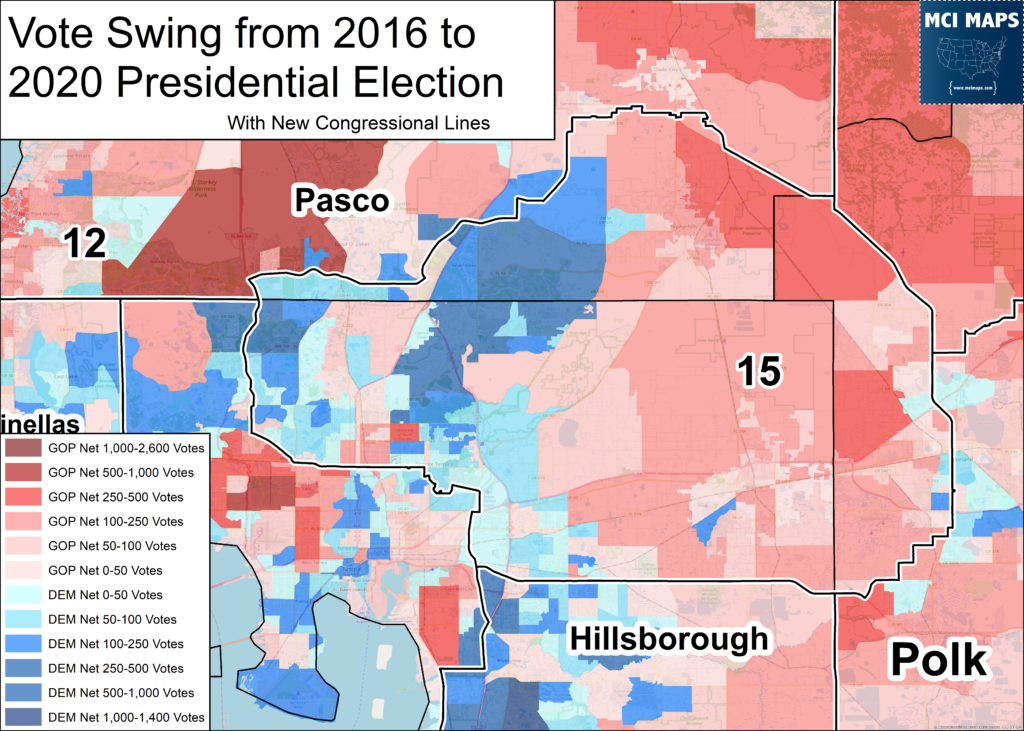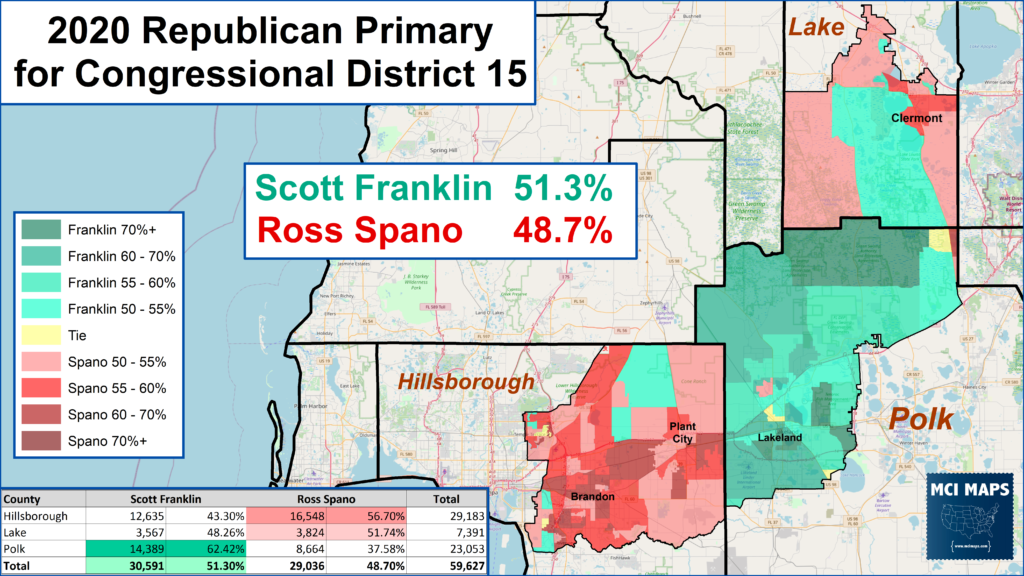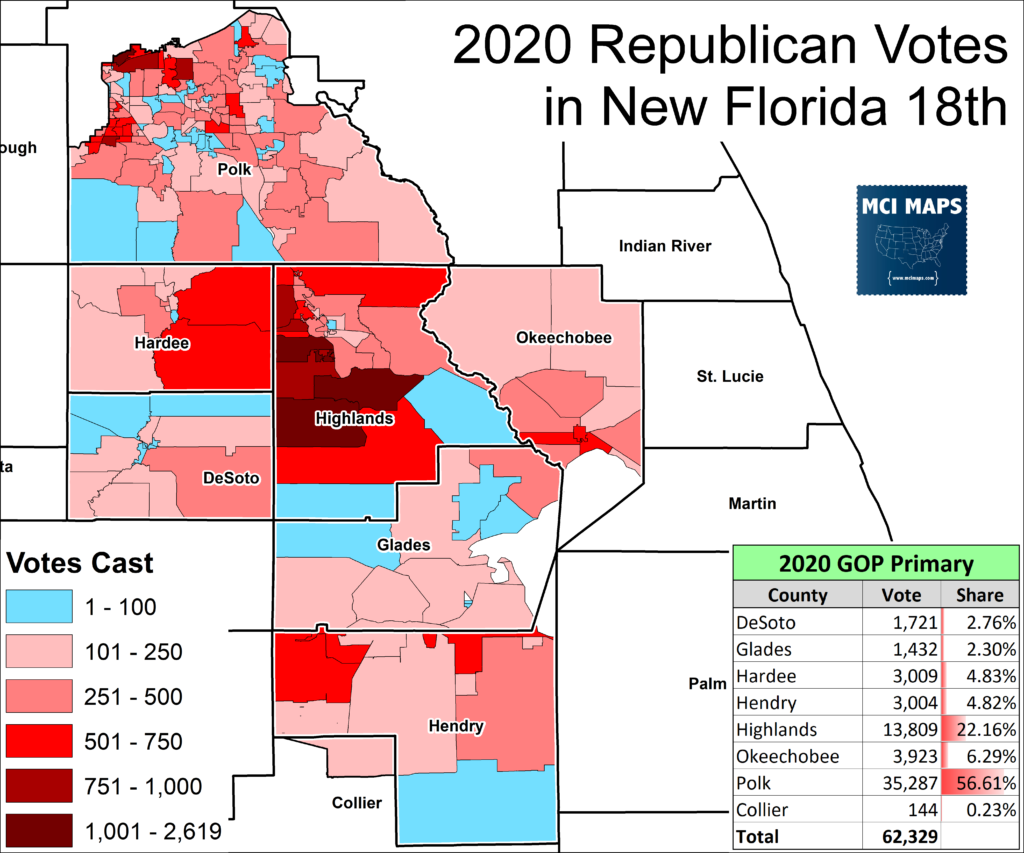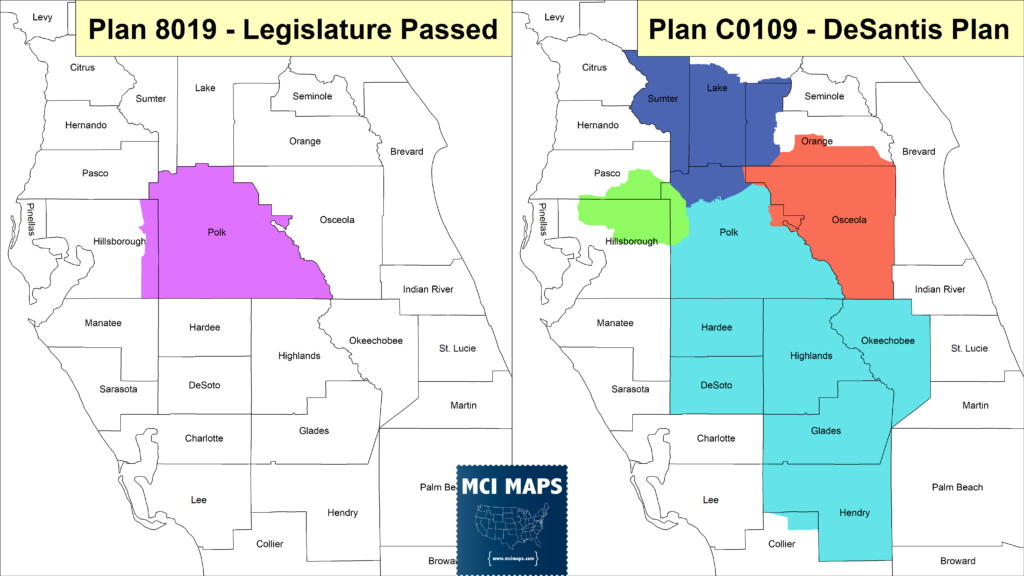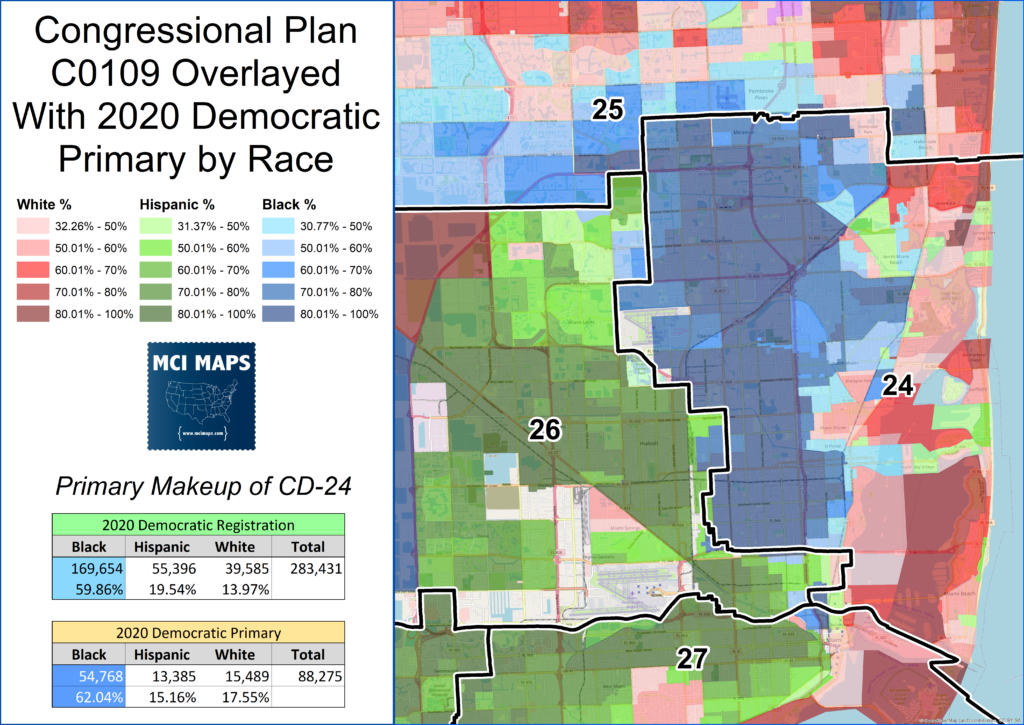Just a few weeks back, Florida passed its Congressional map for the next decade. The map passed over the shouts from a sit-in on the House floor; a protest to the map’s destruction of African-American districts. The sage of Florida’s redistricting process; culminating in Ron DeSantis forcing a map through the legislature, is well documented on my substack newsletter series. For the play by play, I recommend that link. This article aims to focus on the map and the districts themselves.
Partisan Breakdown of the Map
This map is easily the conservative dream proposal. Ask a conservative activists and they will say it is the GOP equivalent to the Democratic gerrymander of Illinois. The map almost guarantees four Republican gains this year. The map aims to ensure Florida’s additional seat will be red, while also erasing Democratic advantages in districts 5, 13, and 7. In the 2020 Presidential election, Donald Trump won 20 of 28 districts.
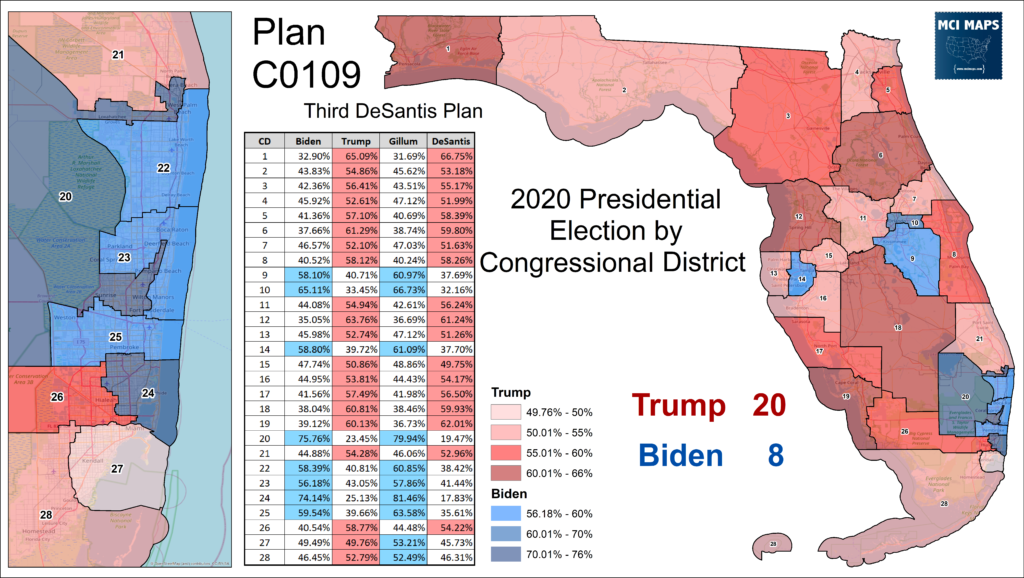
Looking at additional statewide races, it is clear Democrats have no viable path to a majority of the delegation. Even Democratic statewide winners like Barack Obama or Nikki Fried never came close to winning a majority of the seats.
I’d argue the most clear example of the gerrymander is the 2008 Presidential election. Obama defeated John McCain by 3% that year. However, under this plan, Obama takes just 12 seats to McCain’s 16.
Looking at how districts are trending, Democrats will have to see if they can continue improving in places like CD4, CD7, or CD15. Republicans drew the lines hoping that the GOP swing in Miami-Dade will hold.
In the short term, the GOP advantage is rock solid. Democrats can only count on a massive swing with key demographics to really shake this map up.
Racial Makeup
As I covered in my substack, this map achieves its GOP advantage by destroying minority-access districts. The most prominent example in the North Florida 5th district. I covered the history of the 5th district, a longtime black-performing seat, in this earlier article. Initially, lawmakers aimed to preserve the seat and its east-west layout.
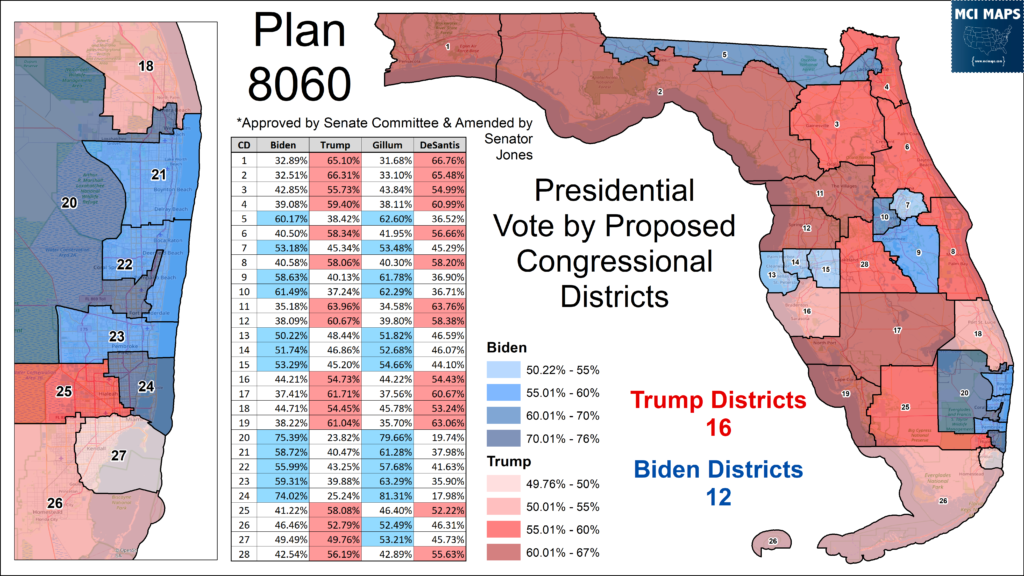
After DeSantis made his opposition to such a layout clear, Republicans offered a compromise. A Duval-only 5th that would still likely perform for African-Americans.
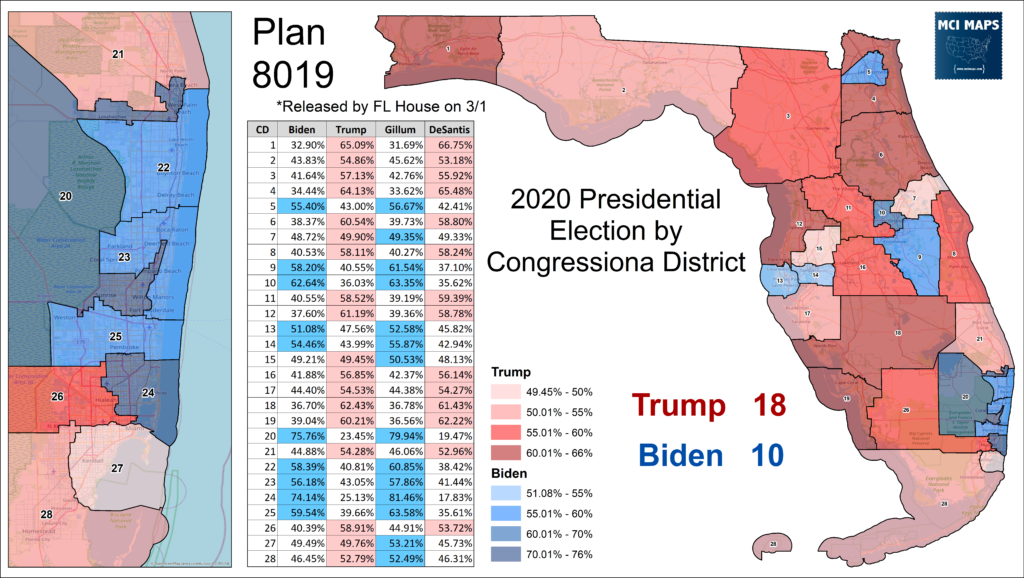
Ron vetoed that plan, and at his insistence (and primary threats) the idea of preserving a minority seat in North Florida was dropped. On top of this, the 10th district was altered to remove the African-American advantage in its Democratic primary. I’ll cover the 10th in much more further into this article. Overall, while the 2015 remap created 4 black-performing districts, this map reduces to 2.
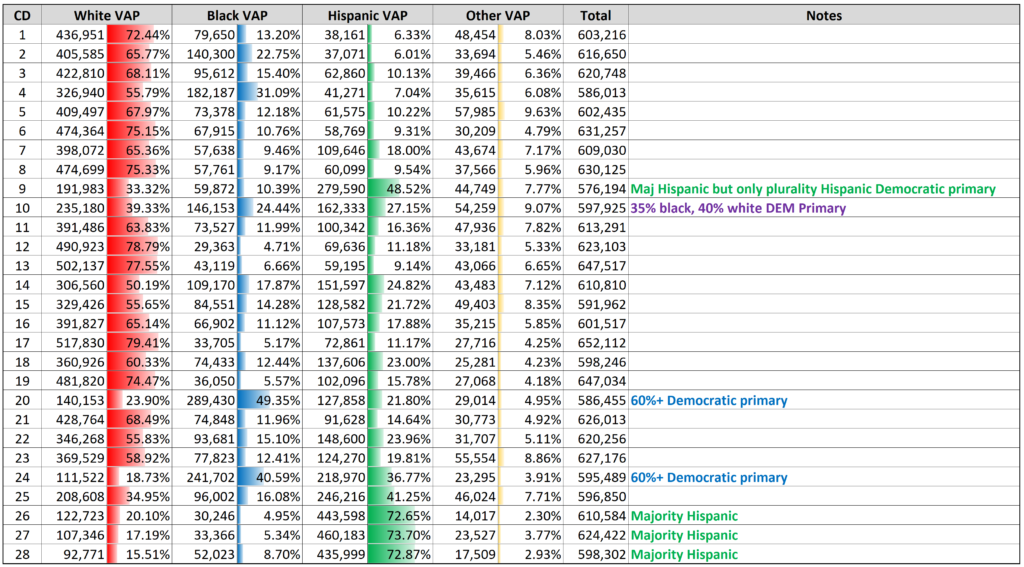
The three longtime Hispanic-majority districts of South Florida remain, while the Orlando-area 9th now goes from plurality to majority Hispanic. We will likewise talk more about the 9th shortly.
Changes from 2015 Remap
One item I will focus on in this piece is how the new districts compare to the lines from the 2015 remap. Some districts retained a good deal of their population, while others were radically altered.
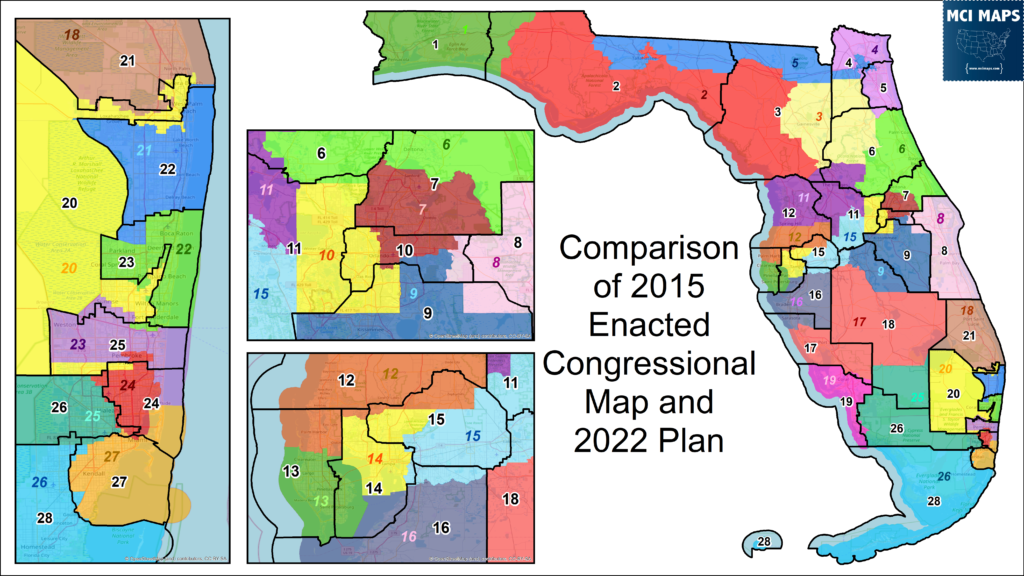
Each district will have a look at which voters they gained or lost. Some legislative drafts attempted to be as least-change as possible. The DeSantis plan is a combination of least change for some areas (namely South Florida) while radically redrawing lines elsewhere. Often the biggest changes are a result of political gerrymandering efforts.
District by District Look
As promised, we are going to go through each district to see how they have changed and what their new characteristics look like.
District 1
Congressional District 1 has been firmly wedged in the western panhandle for decades. Reflecting its population growth, the only changes to district were going to involve its border moving west. The district loses the rest of Holmes County, and half of Walton.
Congressman Matt Gaetz already represents all of the new district. The losses shouldn’t be a major factor in his electoral performance. Gaetz is currently under investigation for a massive sex scandal – however its not clear yet if charges will come. Electorally there is not much indication Gaetz has suffered over the news. Redistricting doesn’t change any fortunes for Gaetz. His re-election is likely to depend on if he is forced to resign. A GOP primary for an open seat would be open to any of the Republican politicians across the three whole counties. Escambia, Santa Rosa, and Okaloosa cast between 25,000 to 35,000 each in the 2020 GOP primaries.
District 2
Congressional District 2 is the first seat to be radically altered as a result of the destruction of the 5th district. The new CD2 largely reflects the district before the 2015 redistricting process. The district takes heavily Democratic Gadsden and Leon; in addition to Northern Jefferson and Madison. It also grabs the deep-red portions of Holmes and Walton that were in CD1. In exchange, it loses several eastern rural counties.
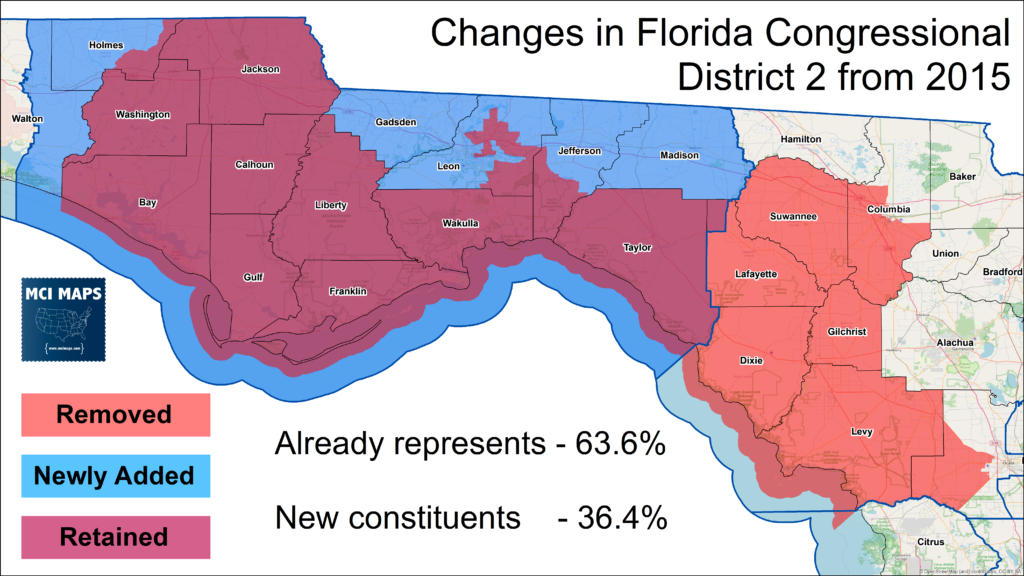
Congressman Neal Dunn now as 36% new consitituents; many of whom are Democratic. The changes do make the district much more Democratic. Dunn’s current seat is Trump +35, while the new district is Trump +11. This is, however, still more than enough for Dunn to be fine.
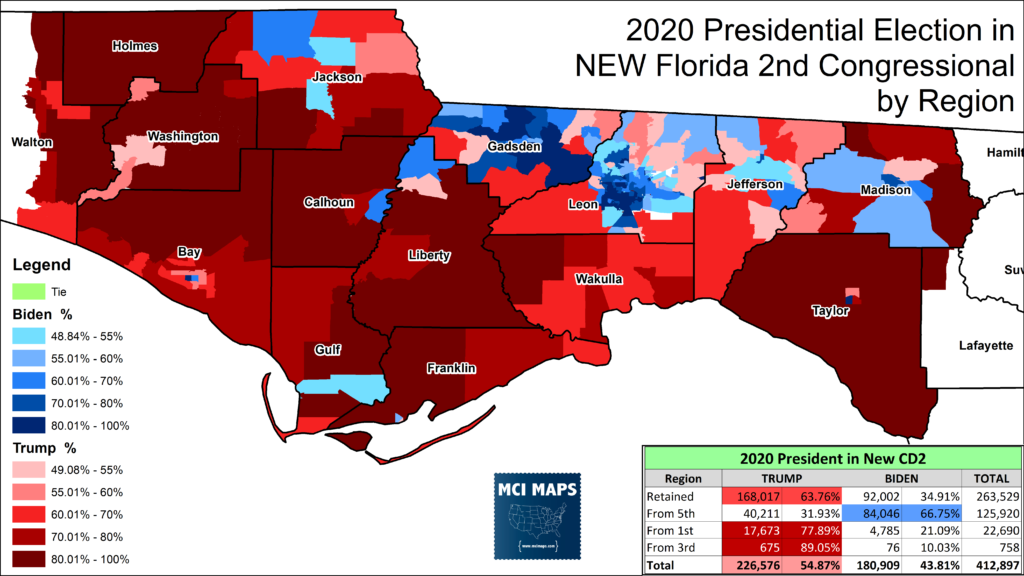
The 2nd district used to be an ancestral Democratic region, dominated by local Democrats but redder further up ballot. Democrat Allen Boyd held the seat/region till 2010, when Steve Southerland became the first Republican to win the region in Congress since reconstruction. In 2014, Gwen Graham defeat Southerland for the district.
Gwen won the seat the same day Rick Scott defeated Charlie Crist by 4% in the borders. Gwen would not run for re-election once redistricting altered the area in 2015. At this point, its unlikely any Democrat could win the new district. Ticket splitting grows less and less as the region gets more Republican overall. Few local Democrats (outside Leon and Gadsden) remain.
For Dunn and any other Republican, primary votes are spread across the district. Tallahassee’s suburban Republican block only makes up 25% of the GOP primary, while Bay makes up 27%. All the other counties make up single-digit percentages in the GOP primary. Over half the Democratic primary comes from Leon County alone.
District 3
Congressional District 3 is making a large shift to the west. The district is losing Clay and Putnam and taking in EIGHT rural counties to the west of Gainesville. Congresswoman Kat Cammack represents just 56% of the new district.
This district, at Trump +14, will be solidly Republican. In terms of GOP primaries, Marion and Alachua combine to just under half the votes. The rural counties, if they can be united, do pack a punch.
Cammack was just elected in 2018 in a very split primary. She is likely fine, recently getting Trump’s endorsement. However, she would be served by working to build up support in the rural counties. One stunning primary from 2012 still remembered today is when Congressman Cliff Stearns lost re-nomination to Ted Yoho. The win was largely painted as another Tea Party victory, but was also fueled by Stearns losing in the areas he had been given in redistricting. It was Yoho’s rural dominance that propelled the victory.
Cammack will want to be sure to avoid a Cliff Stearns fate. Either way, this district will remain solidly Republican. The only major blue pocket is Alachua, home to Gainesville and the University of Florida. However, Alachua is not large enough to control the district’s politics.
District 4
The Jacksonville region is being radically reshaped by the destruction of the minority-performing 5th district. The new Congressional District 4 is in many ways a new type of seat, sharing only modest heritage with any of the old borders. The district is made up of the 26% that is from the current 4th, while also including the Duval-portion of the 5th, and Clay County from the 3rd.
John Rutherford, the current Congressman of the 4th, is expected to run in the 5th district, which has more overlap with his current seat. As a result, this is an open race with a likely GOP primary for the Trump +7 district.
Some have claimed that Jacksonville is getting a second Congressional district as a result of this redistricting. However, the GOP primary for this seat is going to be led by Clay. Duval County only makes up 30% of the primary.
Duval cannot even count on the support of Nassau to go against Clay. While someone like Senator Arron Bean, who represents part of Duval and all of Nassau, would be formidable in the primary, he’s still got a risk from a Clay-based candidate. As I write this, multiple names are filing for or considering filing for the seat. I will revisit that primary in a few months. In the short term this will be a GOP-leaning seat, though it has trended more Democratic.
District 5
The new Congressional district 5 is largely a recreation of the current 4th Congressional. The region was overpopulated and is able to shed Nassau and trade parts of Duval.
John Rutherford, assuming he runs for re-election, should have no trouble in his primary. Around 58% of the likely Republican votes will come out of Duval, while 42% will come from St Johns. This district will remain heavily Republican for the long term. The district is home to higher-educated, upper-income communities that have moved left, but are still light years away from electing a Democrat.
District 6
Congressional District 6 is getting a notable redraw. With Volusia County being split, the 6th district is now moving further inland; taking Putnam and part of Marion county.
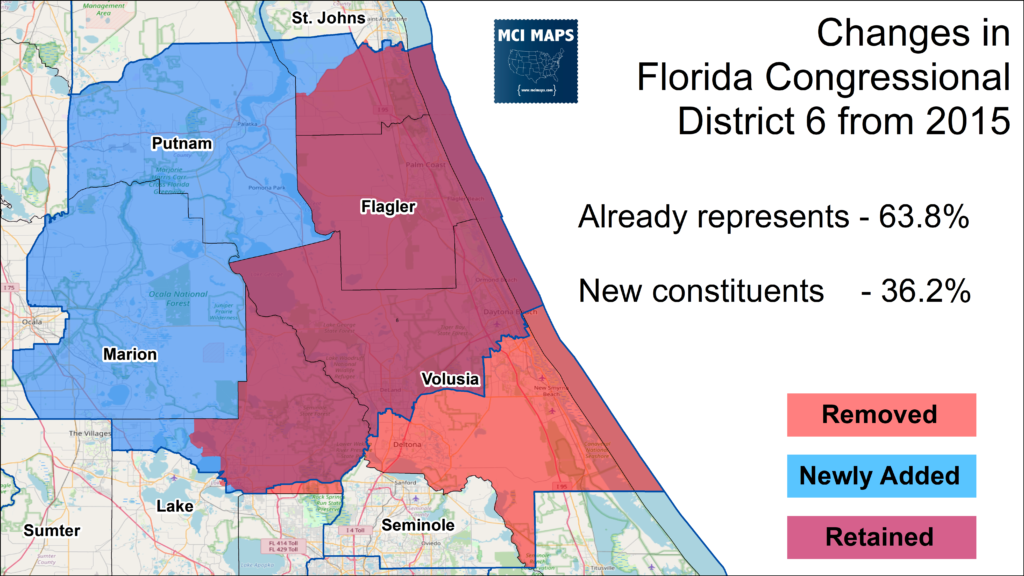
This moves the district’s primary base further inland. Volusia goes from controlling 61% of the primary to just 26% in the new plan.
Volusia’s split damaged its control of the district significantly. Congressman Waltz doesn’t face any major primary threats. He will have some new voters to introduce himself too, however. Any future primary with no incumbent will see a mad scramble with no major geographic power base existing.
District 7
Congressional District 7 was always the most prime candidate to be gerrymandered by the GOP. This district didn’t have any notable minority protections, and realigning it to be more Republican wouldn’t be that hard. The Senate drafts for Congress actually retained the 7th as a Democratic-leaning Seminole/Orange district. The house and DeSantis plans aimed to pair blue-trending Seminole with red-trending Volusia.
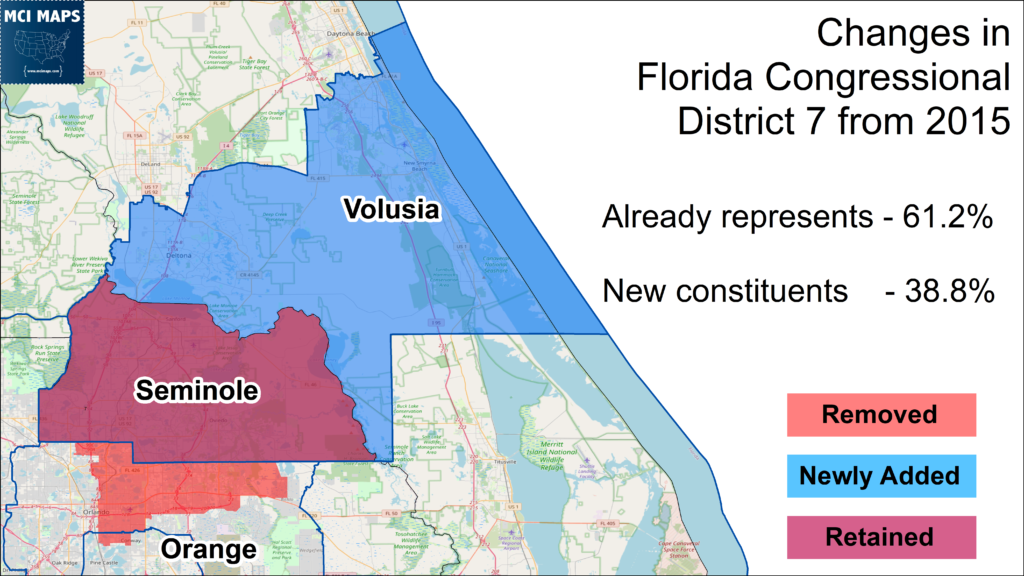
The new district goes from being a seat Biden won by 10% to a seat Trump by 6%. This is done very simply – removing blue Orange and adding red Volusia.
The district will be home to a GOP primary. In a primary, around 40% will come from Volusia while around 60% will come from Seminole. However, the district has the potential to trend Democratic over time. Democrats are gaining more ground in Seminole at a fast pace than Republicans are gaining in Volusia.
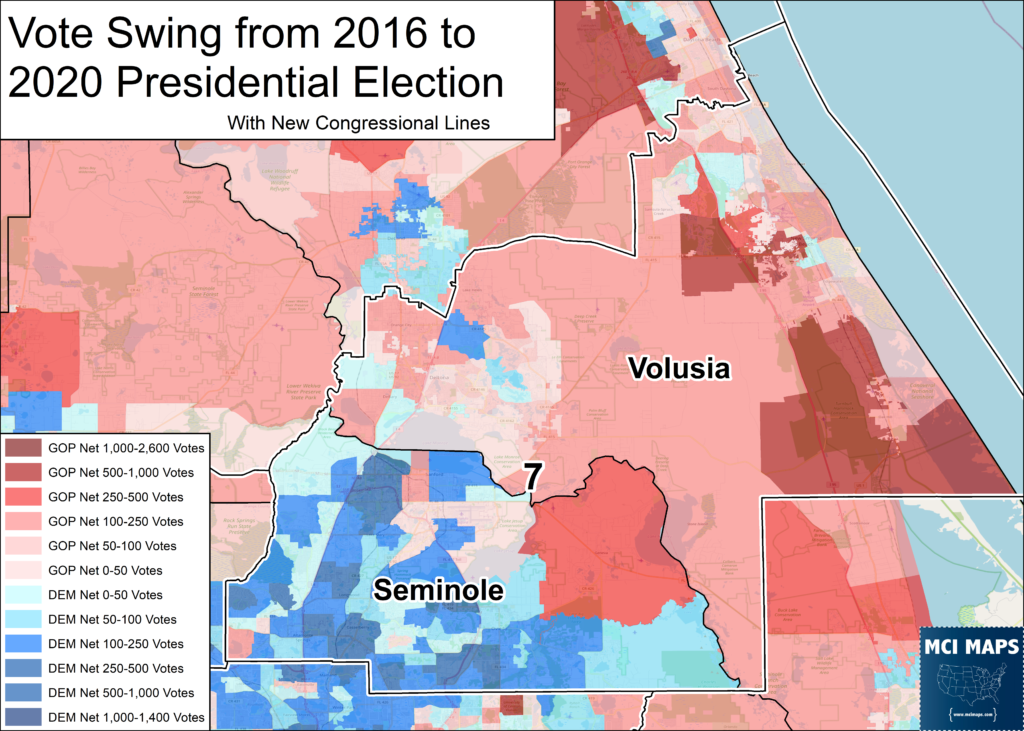
If the district can trend blue quick enough for Democrats to make a play remains to be seen. Short term this will remain a GOP-friendly seat however. There is already a big GOP primary developing, which I will cover much more in future articles.
District 8
Congressional District 18, similar to district 1, only changed by losing voters. By shedding a bit of Orange county, the Brevard-dominated district was able to retain its core makeup.
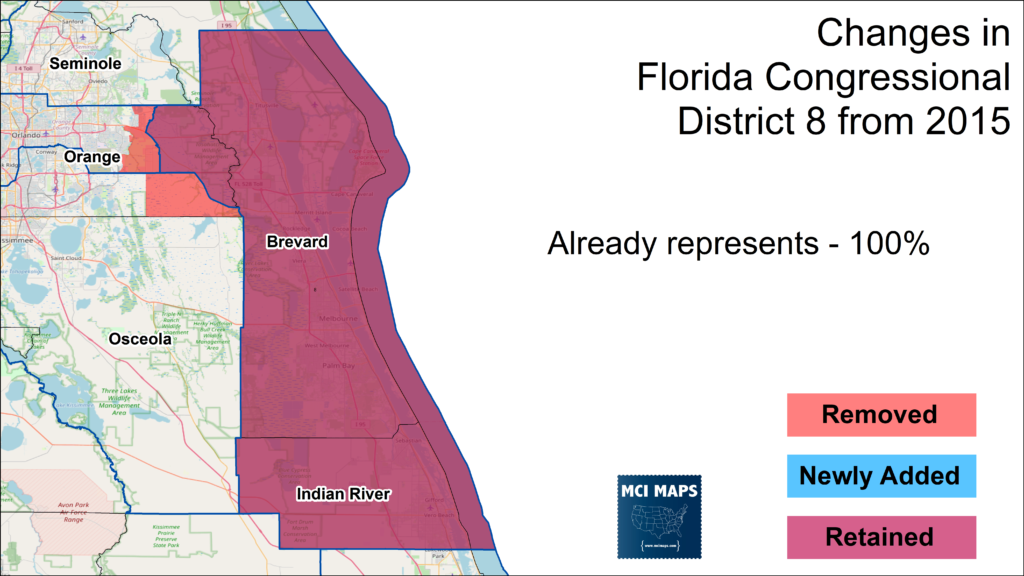
This district will remain a steady GOP seat; currently represented by Congressman Bill Posey. It also remains heavily controlled by Brevard county.
Congressional District 9
One of the few Democratic improvements from redistricting comes in Congressional District 9. Originally an Hispanic-access seat, the district was destined to become a Majority-Hispanic seat thanks to the massive growth of the Puerto Rican population. The district was also the most overpopulated in the state. To even out population, the district lost the bulk of (whiter) Polk County. It traded some land in Orange County as well, grabbing more Hispanic precincts in the south end of the county.
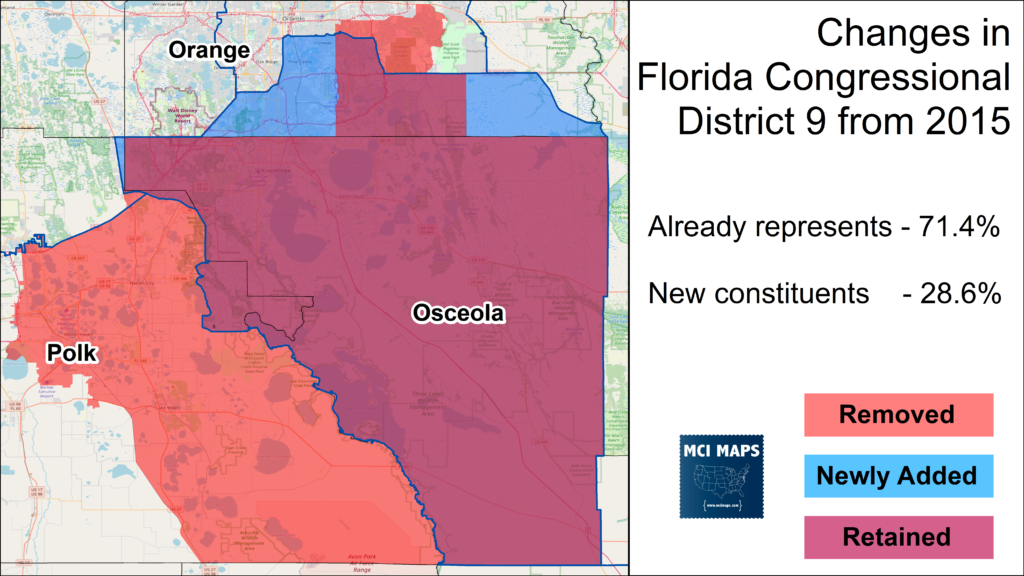
As a result of these changes, the new seat backed Biden by 18%. This is a sizeable shift from the old seat being Biden +7. In fact, Republicans had initially put the 9th on their flip list; hoping for continued Democratic sliding with Hispanic voters. However, where the district is now, its very unlikely the district would slide so much that Congressman Darren Soto is in trouble. If that does happen, its a monumental landslide that dwarfs 2010.
The district is still not majority-Hispanic in voting. As I’ve covered in the past Hispanic registration and voting trails census figures. The seat is 50% Hispanic, but its voting power is more complex. The democratic primary at this point is plurality Hispanic in turnout, but Hispanics voters are on the cusp of making up a majority of Democratic registration.
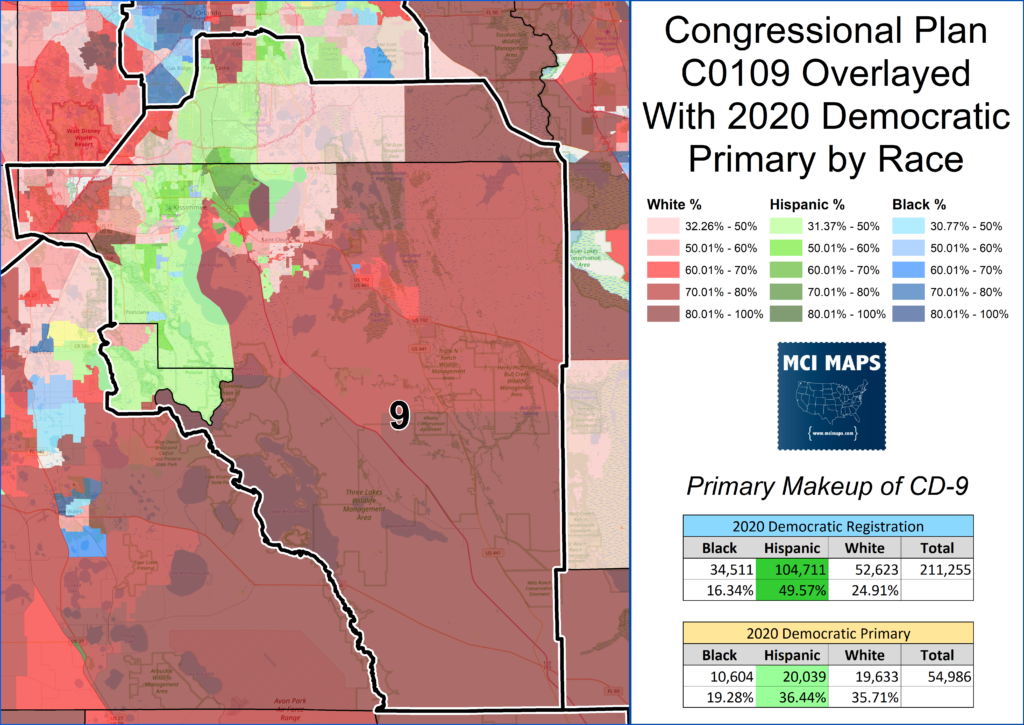
Darren Soto and any future Hispanic Democrat will continue to perform well in the seat. This district is likely to only grow more Hispanic over the next decade.
District 10
One of the many controversial changes ordered by the DeSantis map. The 10th district had been a black-performing seat since its 2015 remap. The old district was deep blue and had a 50% black democratic primary. Val Demings won the seat in 2016 and is now running for Senate. Read more on the Orlando debate in my substack. The DeSantis plan cuts off much of western Orange and has the district stretch east.
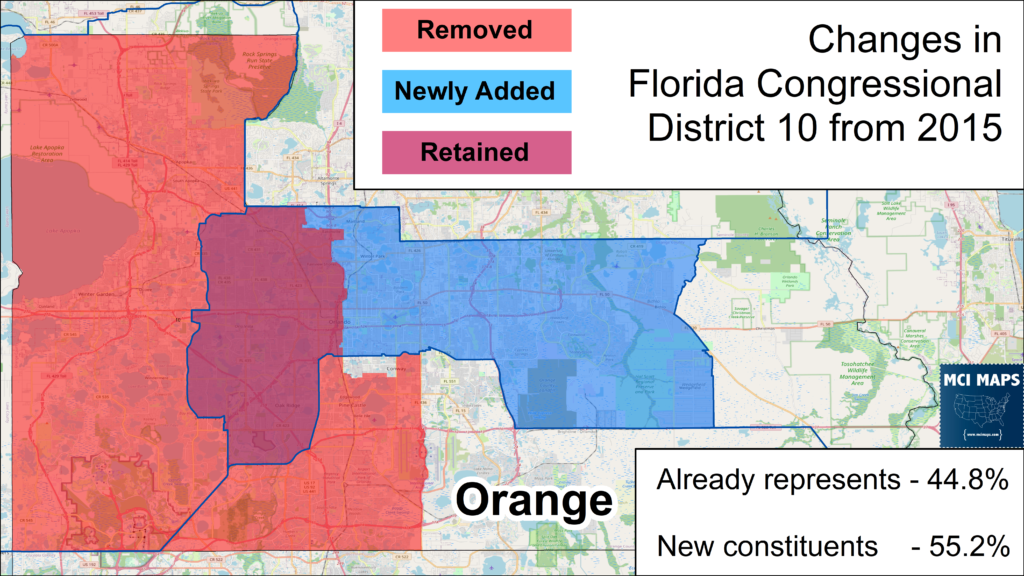
The district remains heavily Democratic, but the lines split the black population of Orlando. See how the DeSantis map compares to what the legislature had proposed.
The 10th district being protected was debated in the legislature. Demographic shifts in the region, namely the growth of Hispanic voters, and white voters moving to Democratic primaries, meant that it was not really possible to draw a seat with a majority-black democratic primary. However, the Senate sought to create a district that retained the spirit of a black-access seat as much as possible. The house did not hold this sentiment. The compromise finally reached created a 10th that was basically tied between black and white voters in the democratic primary. However, the DeSantis plan gives white voters a 5 point advantage.
Why was this a focus of DeSantis? Its actually similar to some House drafts. The big reason is that map drawers wanted to pack as many central and east Orange county democrats as possible. By drawing this central-Orange district, it prevents the 7th from grabbing any of those Democrats. This was part of the overall effort to ensure the 7th was a GOP-leaning seat. Map-drawers packed non-black Democrats into the 10th, had the 11th take Western Orange, and kept the 7th out of Orange county.
Black voters in Orlando were nothing but a pawn in the DeSantis plan. Alex Kelly, who drew the DeSantis map, when asked about the map splitting the black community of Orlando, coldly replied he wasn’t legally obligated to keep them united.
Right now the most prominent candidates for the 10th are African-American. Activist Maxwell Frost has raked in huge sums of cash, while Senator Randolph Bracy is more familiar to voters. Right now no major non-black candidate has filed. This seat may end up with an African-American Congressperson. However, that does not erase the cracking of the black community and the obvious political taint in the Orlando map.
District 11
Piggybacking off my discussion of the 10th district, Congressional District 11 gets some big changes. The district stretches into eastern Orlando, grabbing largely Democratic voters. However, it also grabs southern Lake and Northern Polk. It then loses Marion and the western counties of Citrus and Hernando.
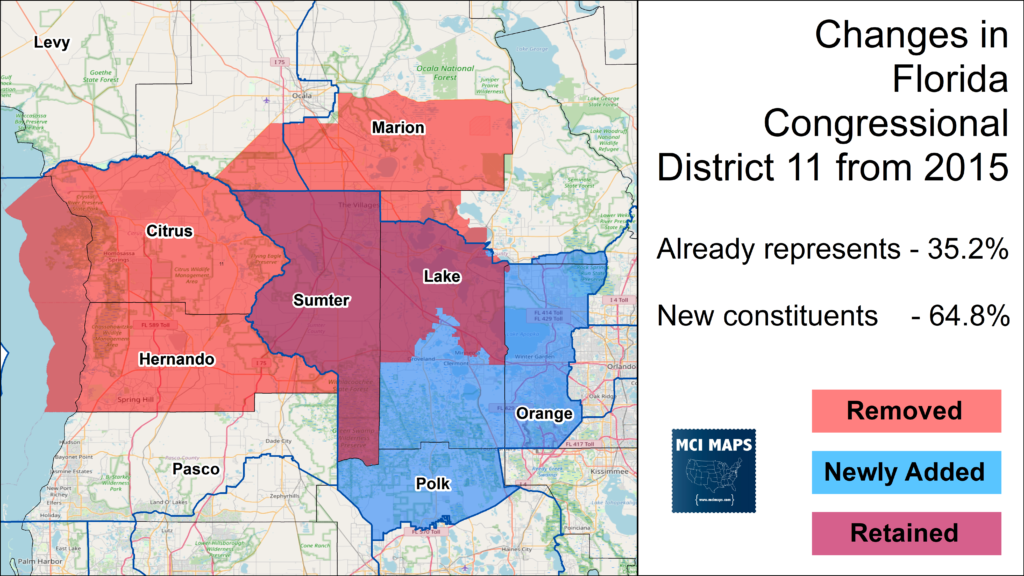
The district remains solidly Republican, with the Democrats of Orange being neutralized by everything else. Congressman Dan Webster has already said he will run for re-election here. He used to represent parts of Orange and Lake counties as part of the pre-2015 version of district 10. The 2015 redistricting drove him to the 11th; where Congressman Rich Nugent was retiring. He won that seat, but faced a primary from a Nugent aid Justin Grabelle; and was notably weaker further west.
Now Webster is losing those weaker counties and retaining areas he did well in or represented before. Of course, Webster’s base aside, the most critical voting black in this district is Sumter County. The county now controls 40% of the primary, thanks to the crazy voting power of the Villages Retirement Community.
Everyone in the Florida political world knows the Villages, a growing retirement community that specifically is seen as a GOP retiree haven. The community continues to expand and grow, and Sumter county has gone from a county of 20,000 to 130,000 since the 1980s. This is very close to be a “Villages district” – and that will only continue with time.
District 12
Congressional District 12 used to be based around Pasco and Pinellas County. The new district now moves north, losing part of Pasco and gaining Citrus and Hernando.
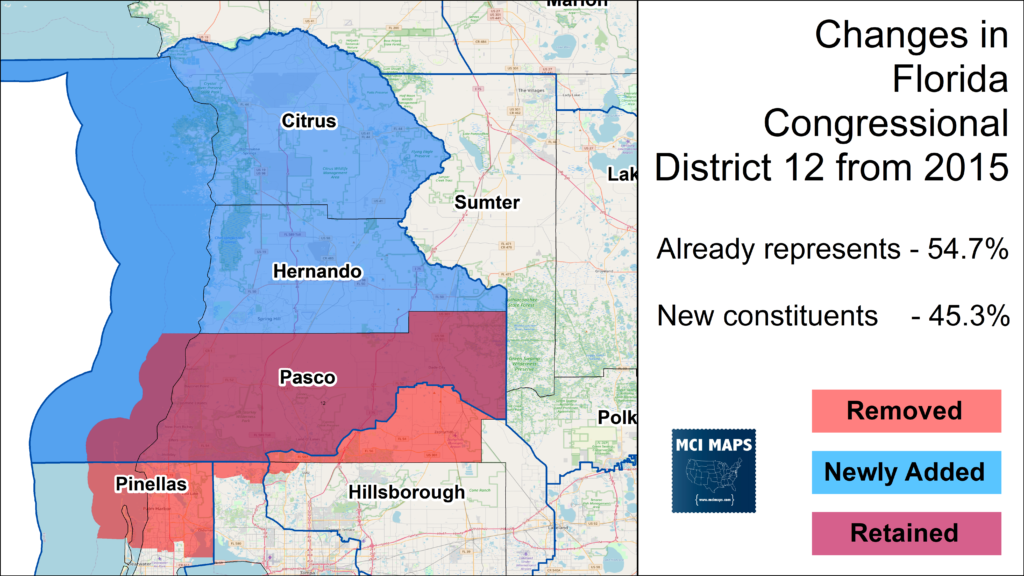
While it was claimed that Pasco retained control of the district, the new lines do result in a notable decrease in Pasco County’s influence in the Republican primary. In the current 12th district, Pasco makes up 63% of the primary vote vs Pinellas and Hillsborough. This new configuration leaves Pasco competing with both Hernando and Citrus counties for influence.
Incumbent Congressman Gus Bilirakis shouldn’t have any real trouble with the district. However, the changes represent a staggering loss for Pasco’s influence. I delved into this situation much more in this recent substack newsletter.
District 13
Congressional District 13 is another one of the seats Republican’s gerrymandered to ensure they would flip the district. Pinellas county is split east-west in the new plan, leaving the 13th to go north to the Pasco County border.
The result is a district that Trump won by 6%. This is achieved by cutting off the Democratic-leaning east Pinellas and moving up the GOP-friendly north. How Tampa Bay is gerrymandered can be seen in the map below. The border of the 13th and 14th splits the city of St Petersburg in half, and specifically splits the city’s black community.
The 14th, which I will talk about more in a moment, is turned into a Democratic vote-sink. It crosses the open water to grab east Pinellas. This is the type of Fair Districts violation the court struck down in 2015. DeSantis clearly is counting on more conservative courts to accept the move.
As the table below shows, the 13th gains a region that Trump won by 10 points, while losing voters that Biden won by 30 points.
The result will be a seat very likely to elect a Republican in November.
District 14
Congressional District 14, as already mentioned, is a Democratic vote-sink for Tampa Bay. The district now stretches into Pinellas county, while losing the North Tampa region.
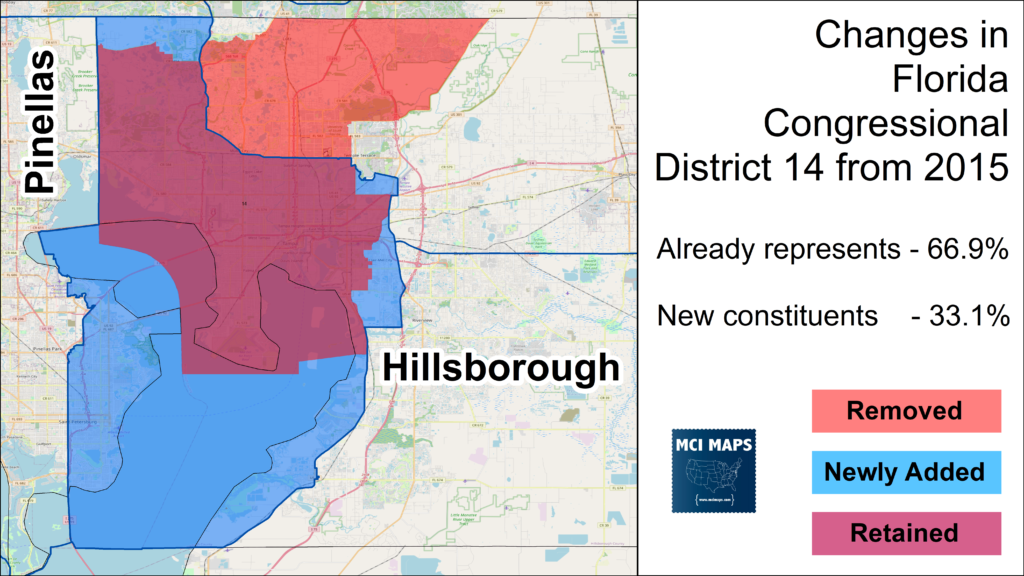
The district is now Biden +19. Congresswoman Kathy Castor will have zero problem getting re-elected in this seat. Castor would have been in more marginal seats in earlier drafts, namely a seat that had Biden winning by single digits. From a partisan perspective, Castor’s safety was contingent on if map makers aimed to restrict the number of Democratic seats in Tampa. The Senate drafts had three narrow Biden seats in the Tampa Bay region. That map could have led to three Democratic Congresspeople, or zero, depending on the national mood. Under this plan, Castor is safe, but other democratic opportunities are limited.
District 15
Congressional District 15 changes by leaving out its eastern regions and moving further West and into Pasco. The district will become much more dominated by the Tampa market and the growth in the north end of Hillsborough county.
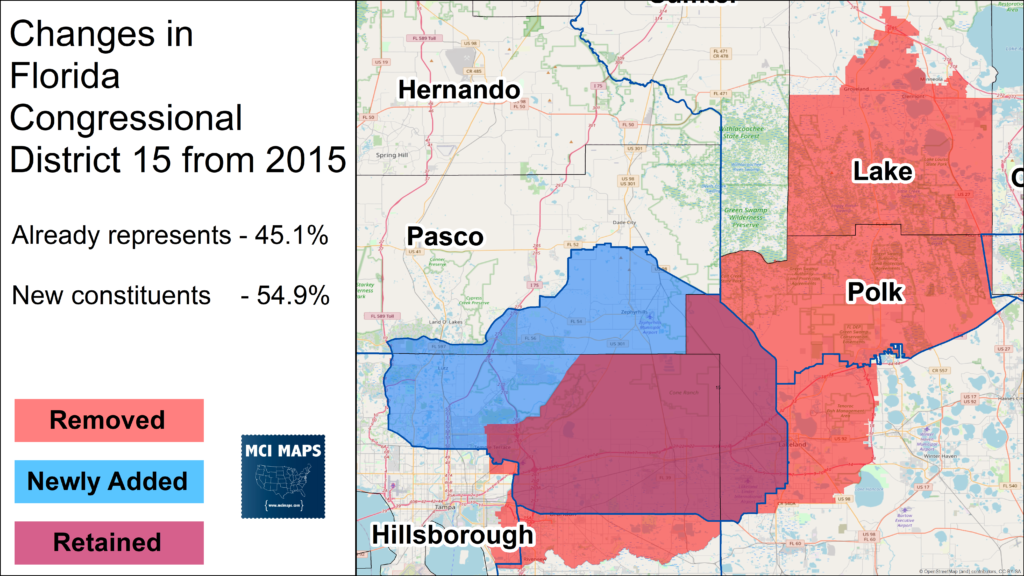
This district is part of the overall effort to gerrymander the Tampa Bay region. The district grabs a chunk of the Democratic-leaning suburbs that go along the I-75 corridor and tries to pair them with more Republican-friendly voters.
The district is a very narrow seat, and if it survives a court challenge, how it evolves over the next 10 years should be interesting. Biden lost it by 4 points, though its been a close seat the last several cycles. The district is also home to many growing Democratic suburbs.
The district only narrowly backed DeSantis over Gillum, and backed Nikkie Fried in 2018. While the red midterm should give Republicans cover, this district could be a potential Democratic flip down the line; especially if Democratic growth in the west end continues.
District 16
Congressional District 16 is the last of our Tampa-Bay region seats. It also is part of the GOP effort to gerrymander the area. The seat gives some of its GOP-friendly coastal precincts to the 14th so that it can take in more Democratic-friendly communities in central Hillsborough. The district has to lose Sarasota County to even the population out. That said it retains 82% of its population.
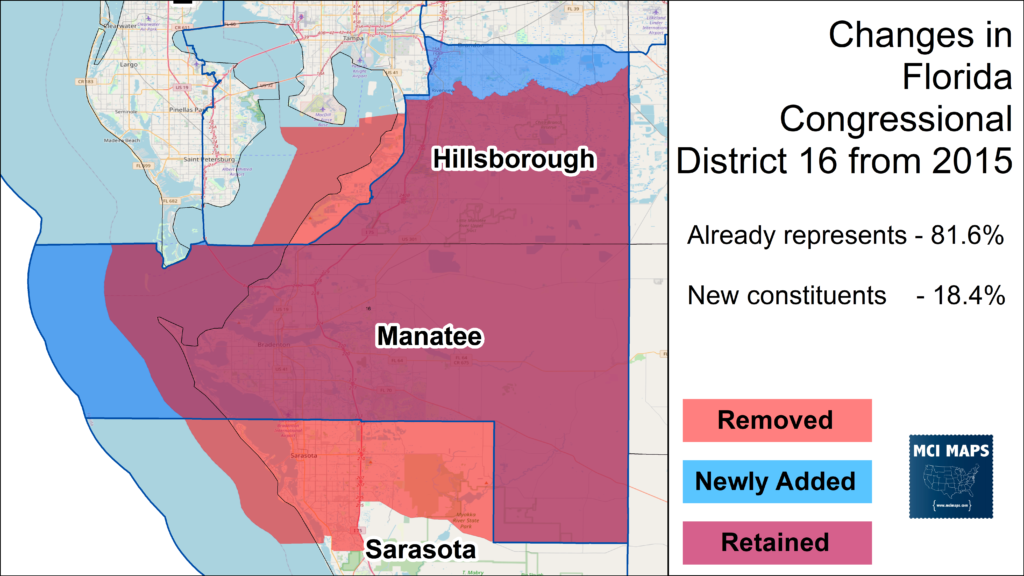
Congressman Vern Buchanan, who has always represented part of Sarasota, has opted to run for re-election here. The alternative was a primary challenge with Congressman Steube in the 17th. Buchanan should have little trouble in this seat. The Hillsborough portion is likely to continue getting bluer with time. However, the district isn’t on the cusp of competitiveness the same was the 15th is. Any future open primary will give a Manatee-based candidate the advantage.
District 17
The 17th district is getting much smaller, but still retains 63% of its population. This seat is dumping its rural farm portions, instead taking in Northern Sarasota County.
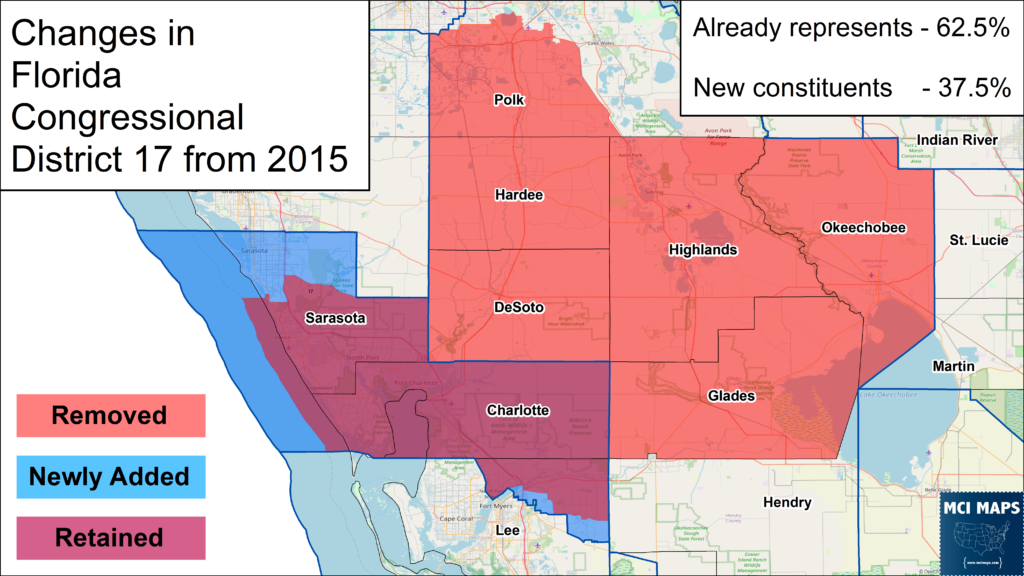
This seat’s changes really highlight how empty the middle counties are. Those counties will now become part of the 18th. This new Lee/Charlotte/Sarasota seat will be represented by Congressman Greg Steube. He will face little trouble making it through this seat. Sarasota controls a majority of the GOP primary in any future contested contests.
District 18
Congressional District 18 is argumentably the true “NEW” district for Florida. This district cannot really be compared to any of the current seats. It is made up of many bits and pieces of old districts, from the 15th, 9th, 25th, and 17th. The district covers most of Polk and then all of the major farm counties of central Florida. As well as a sliver of Collier. Congressman Scott Franklin, who represents just 17% of the district, intends to run here.
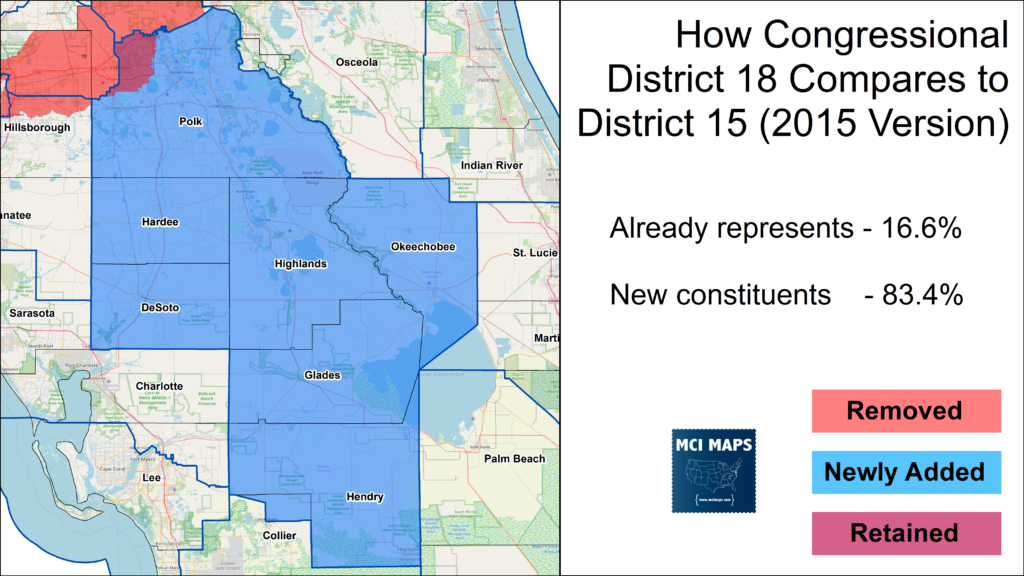
Franklin, a former Lakeland city commissioner, won the 15th Congressional district in 2020. His victory was heavily fueled by his Polk County base.
Franklin fits for the 18th because Polk County will likely control the district. The seat’s population is 70% in Polk County. Polk will make up around 56% of GOP primaries in the new district. Highlands comes next with 22%.
Polk County was actually whole in several redistricting drafts, but got split 4 ways in the DeSantis plan!
However, Polk is likely to make the 18th its key for Congressional representation. Congressman Franklin is likely to lead that effort. While I don’t expect it this cycle, a united effort by the lower farm counties could always emerge in a future open contest. In the meantime, this is a Polk-based seat; though not as good as the county could have had under other plans.
District 19
Congressional District 19 remains largely unchanged in redistricting. This district includes most of Lee County and the GOP-heavy coastal suburbs of Collier. Only minor border changes are taking place here.
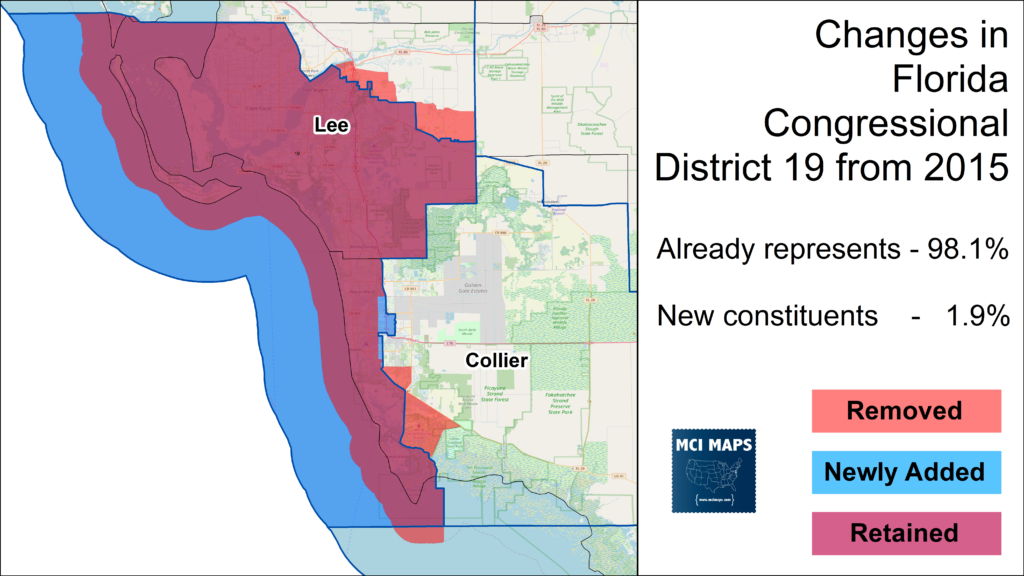
This seat will remain steadfast GOP. Byron Dolands won the district in a very divided primary in 2020. Nothing much changes with the new district. It will continue to be a seat of upper-income Republicans. While it has trended left a bit, it is still deep red. Similar to the new Florida 5th.
District 20
Congressional District 20, a majority-black seat covering Palm Beach and Broward county, retains most of its shape and population in redistricting.
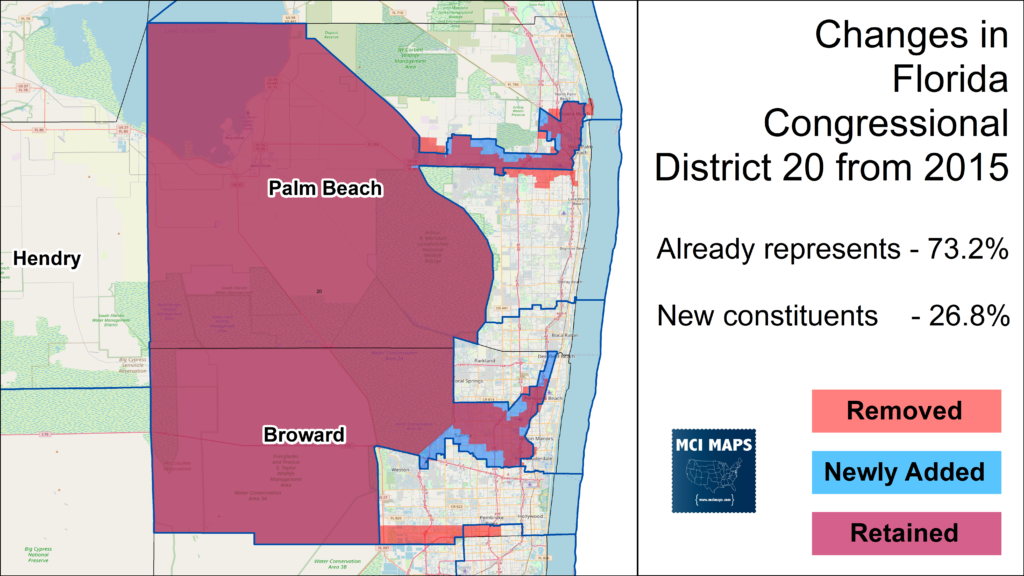
Most legislative drafts retained the 20th’s unique shape. This district is made up of the Everglades on its west end, and then goes into central Broward and Palm to unite the African-American populations. The result is a solidly black Democratic primary.
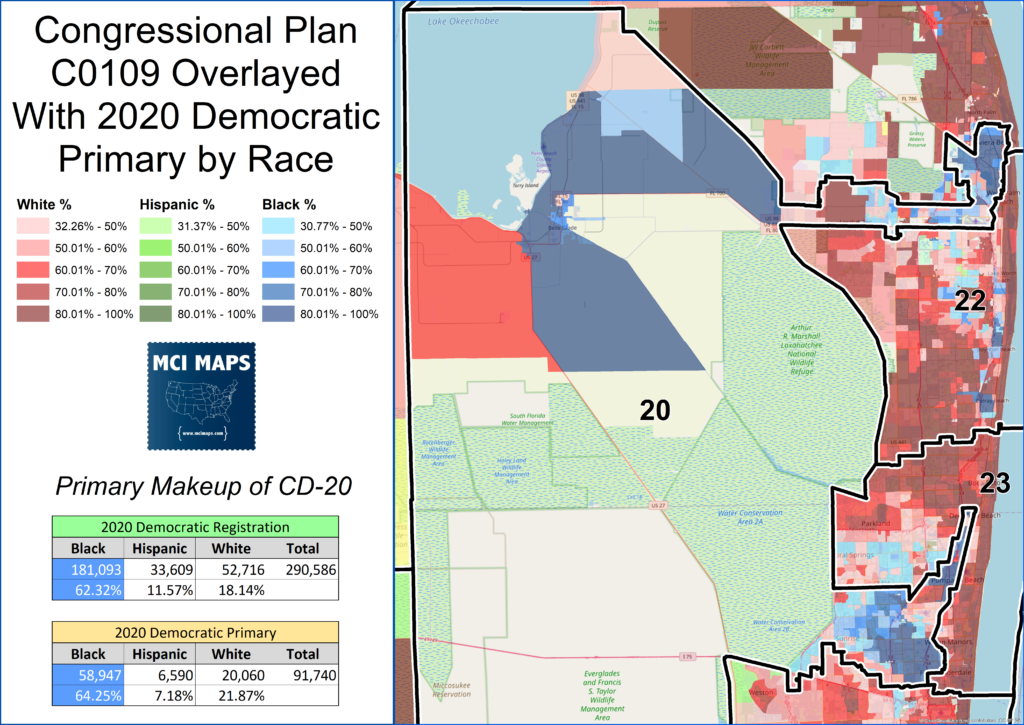
The shape turns many people off, but it is a shape I will defend. The black communities of Broward and Palm both wish to remain part of a black-performing district. Originally a DeSantis plan had a Broward-only black-access district. However, when the final DeSantis plan came out, the legislature’s version of the 20th was restored. It is very likely lawmakers convinced DeSantis to accept their South Florida district makeups. Of course, the fact DeSantis included such a unique district undercuts his argument the current 5th district is not compact.
The Democratic primary is heavily dominated by central Broward county. Newly-elected Congresswoman Sheila Cherfilus-McCormick faces a rematch with former Broward Commissioner Dale Holness. I’ll cover more of that rematch in future articles.
District 21
Congressional District 21 is the heir to District 18. The seat, held by Republican Brian Mast, only really changes its number. Otherwise 98% of the district remains the same.
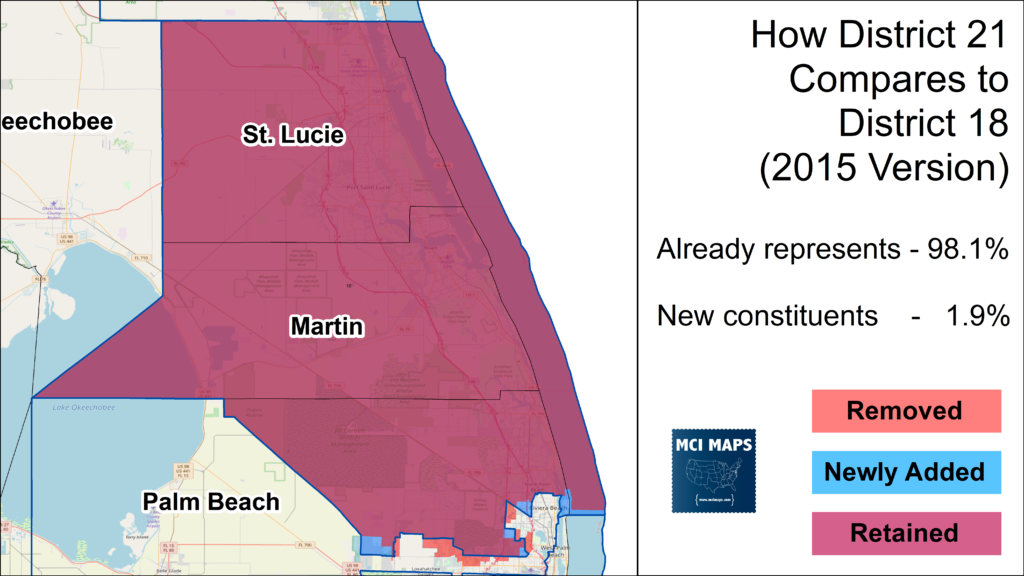
With St Lucie continuing to trend red, there is no reason to think Republicans have much to worry about in this district. Each county controls around 25,000 likely GOP primary votes. If Mast retires down the line, Republicans across all three counties will be vying for the seat.
District 22
Covering central Palm Beach County, Lois Frankel’s Congressional District 21 has been renumber 22. Otherwise little else has changes for this seat.
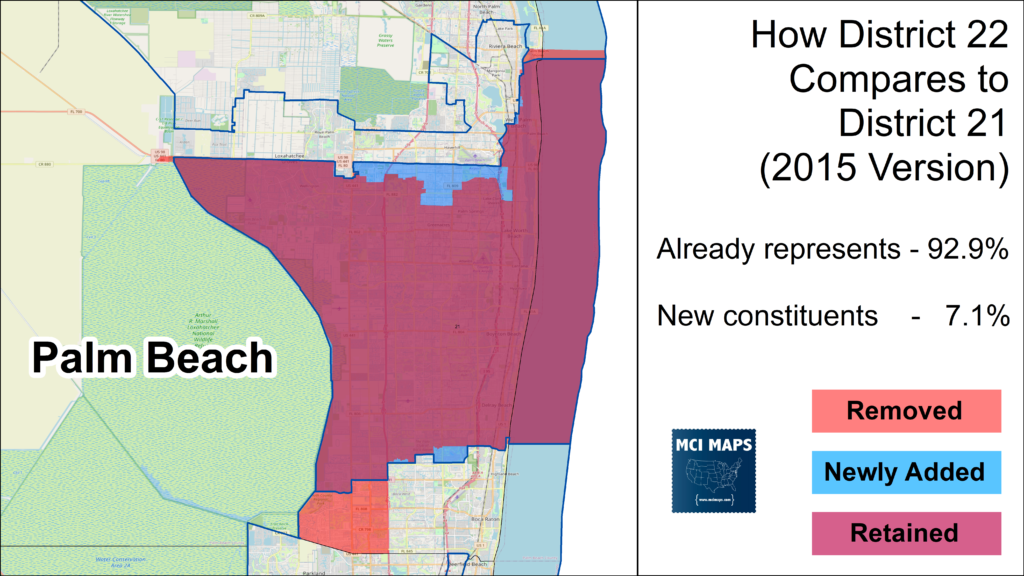
The district grabs some voters from CD20 and gives some other voters to CD23. Otherwise this is the same district that has held little trouble electing Palm Beach Democrats for the past decade.
District 23
Congressional District 23 is the heir to CD22. Like much of South Florida, this district sees only minimal changes. The biggest difference is the 23rd now has a large block of west-Palm voters added. Otherwise the district trades precincts on its borders.
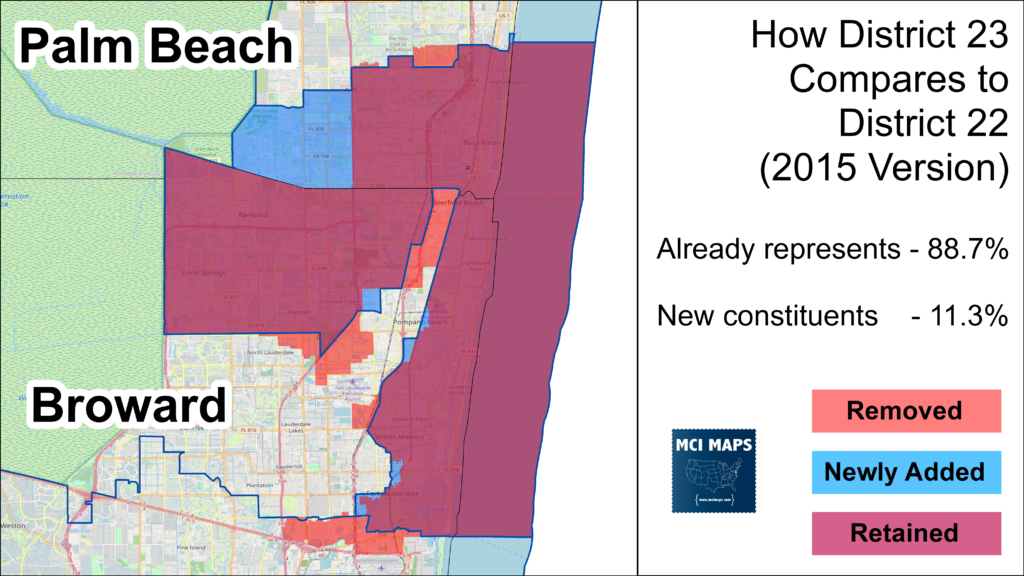
Congressman Ted Duetch is retiring from the this district, leaving the door open for a crowded primary. However, former State Representative Mike Moskowitz has already emerged as a clear frontrunner for the seat. Moskowtiz hails from the Northwest Broward portion of the district and his expected to dominate that region. The primary field is still evolving for this district.
Whoever emerges from the primary (advantage Moskowitz) is almost a lock to represent this district.
District 24
Congressional district 24, long a majority-black or near-majority district, is seeing some notable changes despite retaining 70% of its population. The district is trading some precincts in Broward while moving fully to the North Miami-Dade coast.
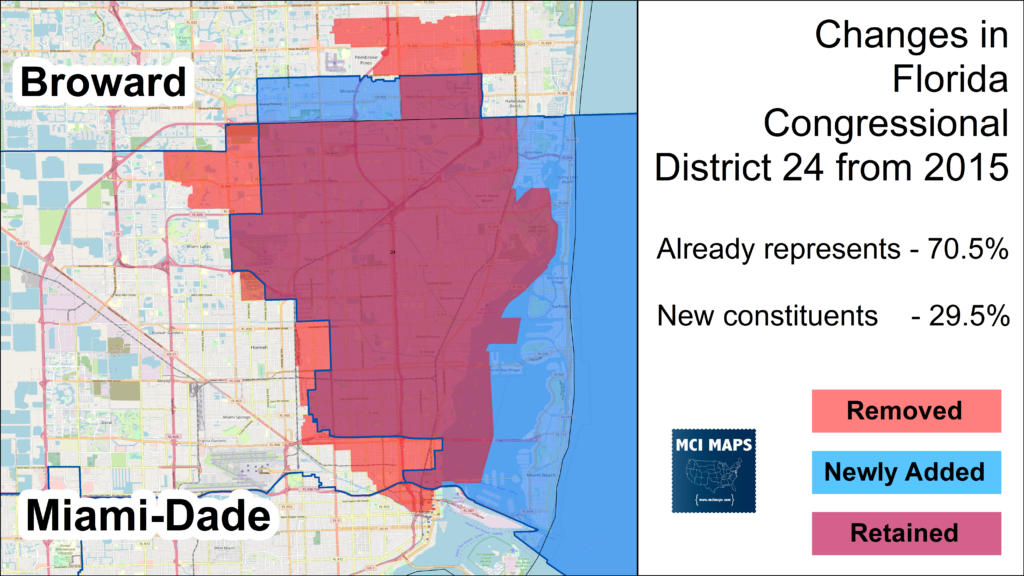
The district is trading some heavily-black precincts in Broward and instead grabbing the largest Hispanic and white coastal towns; namely Miami Beach. The result is the district only being 41% Black VAP. However, it still remains a black-access district; with a 62% black Democratic primary.
The decision to have the 24th go all the way to the coast is easily justified in that it makes the seat more compact and still remains a black-performing seat. However, there is also a clear partisan motive; namely moving the heavily-Democratic Miami-Beach out of the 27th. I will delve into that more in the CD27 section. Regardless of motive, the result is a unique divide in the Democratic primary; with the less black coastal communities competing with the heavily-black inland communities.
Fredricka Wilson is presumably running for re-election. However, there has been some rumbling of a retirement and potential free-for-all. This is where the border changes could have an impact. A divide black vote could lead to a coastal candidate sneaking a plurality win. This is especially possible with the black community being divided between Caribbean and non-Caribbean voters. State Senator Jason Pizzo, a white Democrat from the coastal communities, has indicated he was approached to run for the seat on the chance that such a divide would happen. Pizzo made it clear he would not make the run; and in speaking on it publicly revealed a sleezy move going on behind the scenes.
We will need to see how this continues to develop.
District 25
Congressional District 25 is the heir to the current 23rd district; held by Debbie Wasserman Schultz. The district remains anchored in southern Broward; namely losing its portion of the coastal Miami-Dade communities. The district lost the city of Sunrise and gained most of Miramar, as well as trading some other communities.
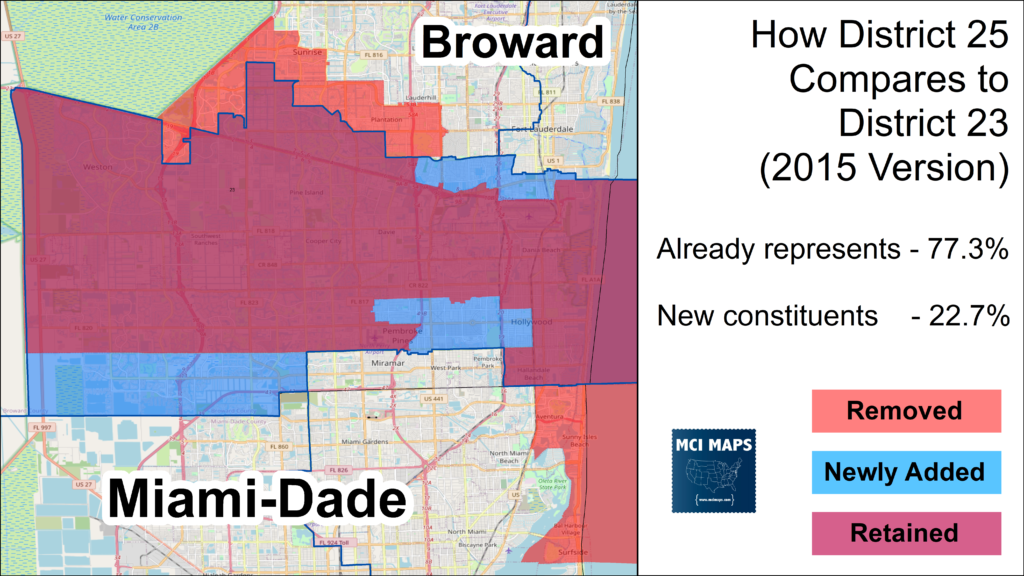
The seat remains solidly Democratic and realistically should be fine for Schultz to win re-election in. The district is growing more and more diverse, with Caribbean and Hispanic population increases in the South Broward area.
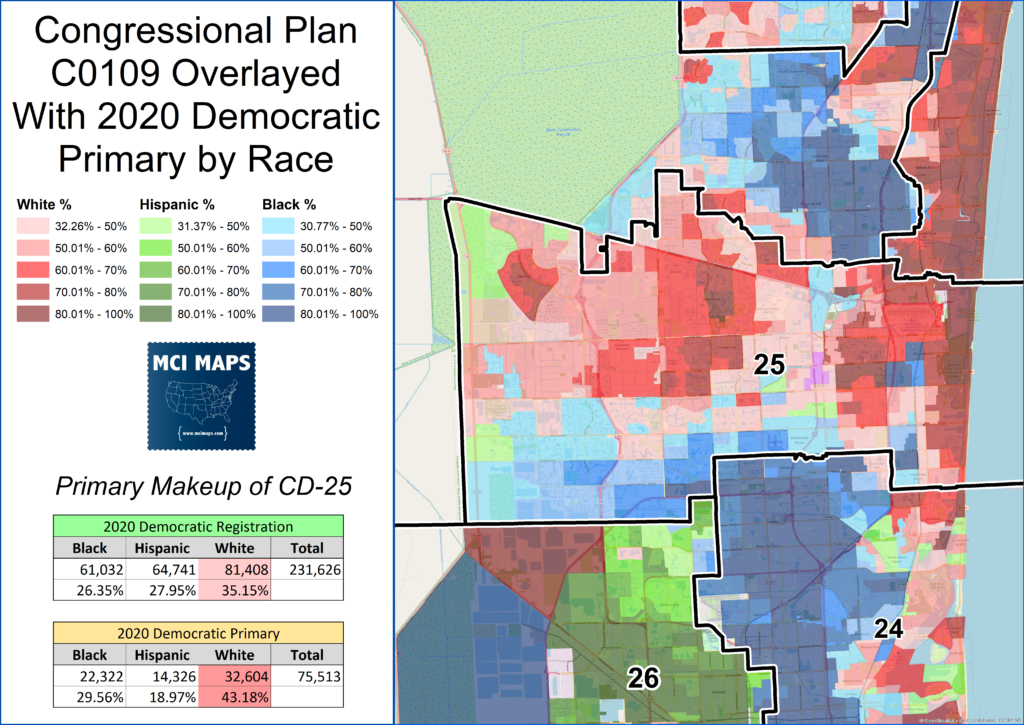
Once Shultz retires, there will be a massive free-for-all for the seat.
District 26
Congressional District 26 is the heir to the current 25th. This Hispanic-majority district has been represented by Mario Diaz-Balart for years and is by far the most conservative of the Hispanic-majority districts. With a heavy Cuban population based out of Hialeah, the district voted Clinton by 3% in 2016 and then surged to Trump by 18% in 2020.
The biggest changes for the district is it dropping Hendry County.

Rural Hendry county has long been part of the district. The county is majority-Hispanic via the census. However, that population is heavily tilted by the migrant farm workers. The county has long been majority-white in registration. The district now includes the east Collier region (Which has a Hispanic minority there) and the NW end of Dade.
The district overall changes very little from previous version and remains dominated by the Miami-Dade/Hialeah region.
District 27
As previously mentioned in the District 24 section, Congressional District 27’s biggest change is losing Miami Beach. The district dumps that coastal town, a community its held for decades, and instead grabs some more inland precincts.
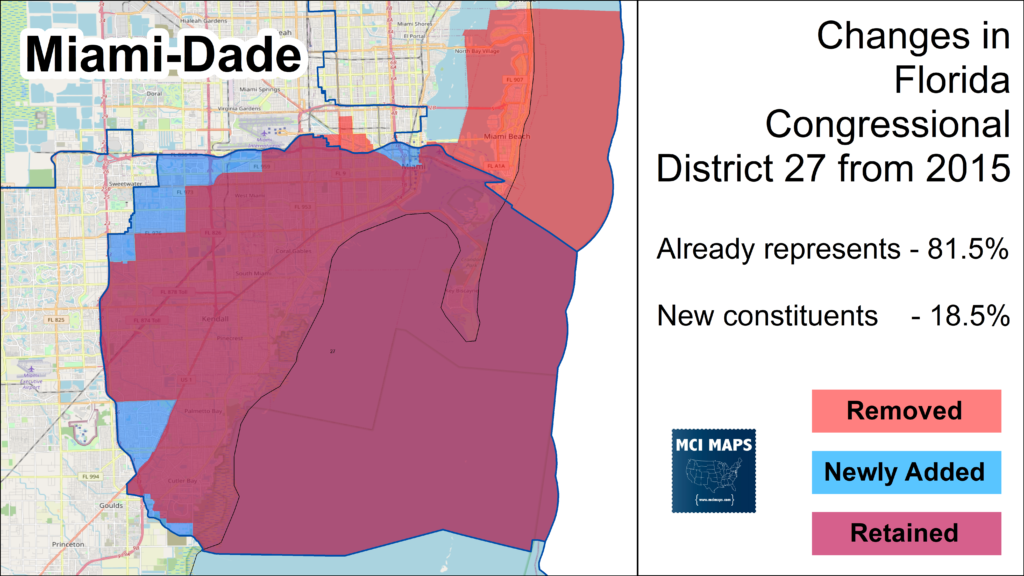
These changes are overall very minor, but they move the partisan needle a couple solid points to the right. The original 27th backed Joe Biden by 3%. This new version is neck and neck, with Trump taking the seat by 1%.
The communities that Miami-Beach loses and adds tells the story of thee changes.
The loss of Miami-Beach is a major shift for the district, which long had Congresswoman Ileana Ros-Lehtinen taking pride her representation of places like South Beach; which has long had a notable LGBT community. IRL, as a result, was long a pro-LGBT Republican. South Beach will now go into CD24.
District 28
Congressional District 28 only has minor changes. The district remains heavily concentrated in Southern Dade and the Florida Keys. The seat trades a couple precincts with Districts 25 and 27, retaining 93% of its population.
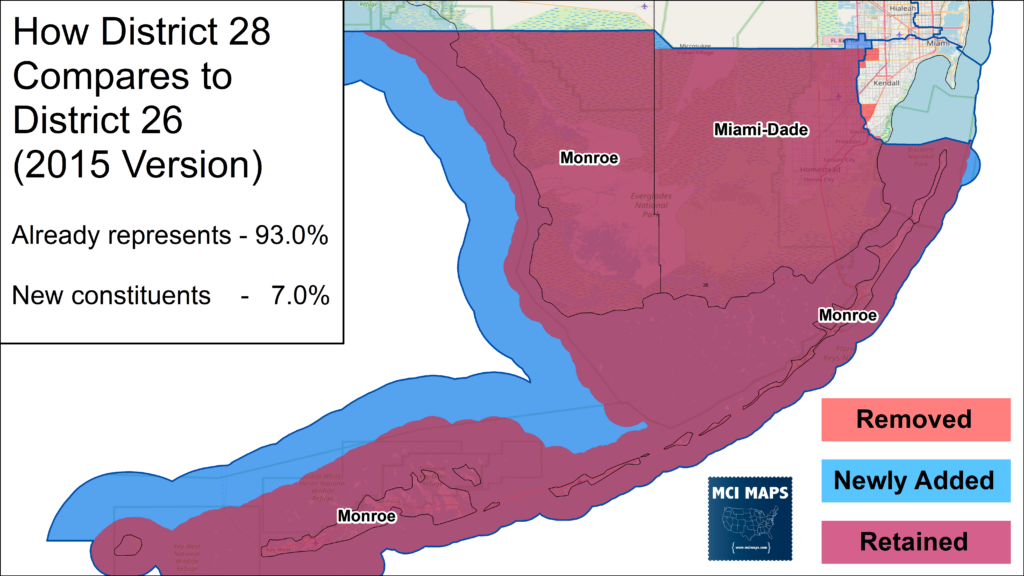
The district remains a Trump +6 seat. Overall the lack of effort to shore-up the district tells you how Republicans feel about the opportunity to hold these figures with Hispanic voters.
Final Thoughts
The map stands out as one of, if not the most, severe gerrymanders in the nation. Lawsuits are already filed, though any changes are unlikely before the midterms. Whether this map survives the decade depends on the much-more-conservative courts of the present day. In the meantime, there are the new Congressional districts for Florida.

